Watercolor Pet Portrait How-To
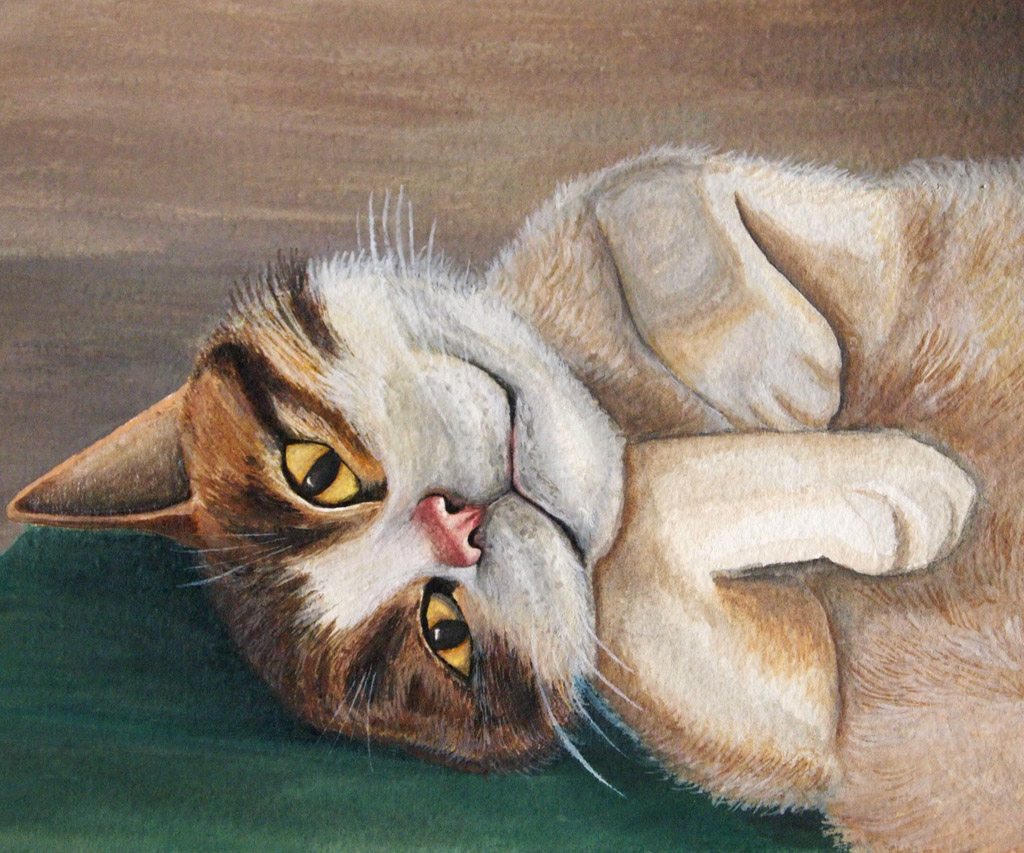
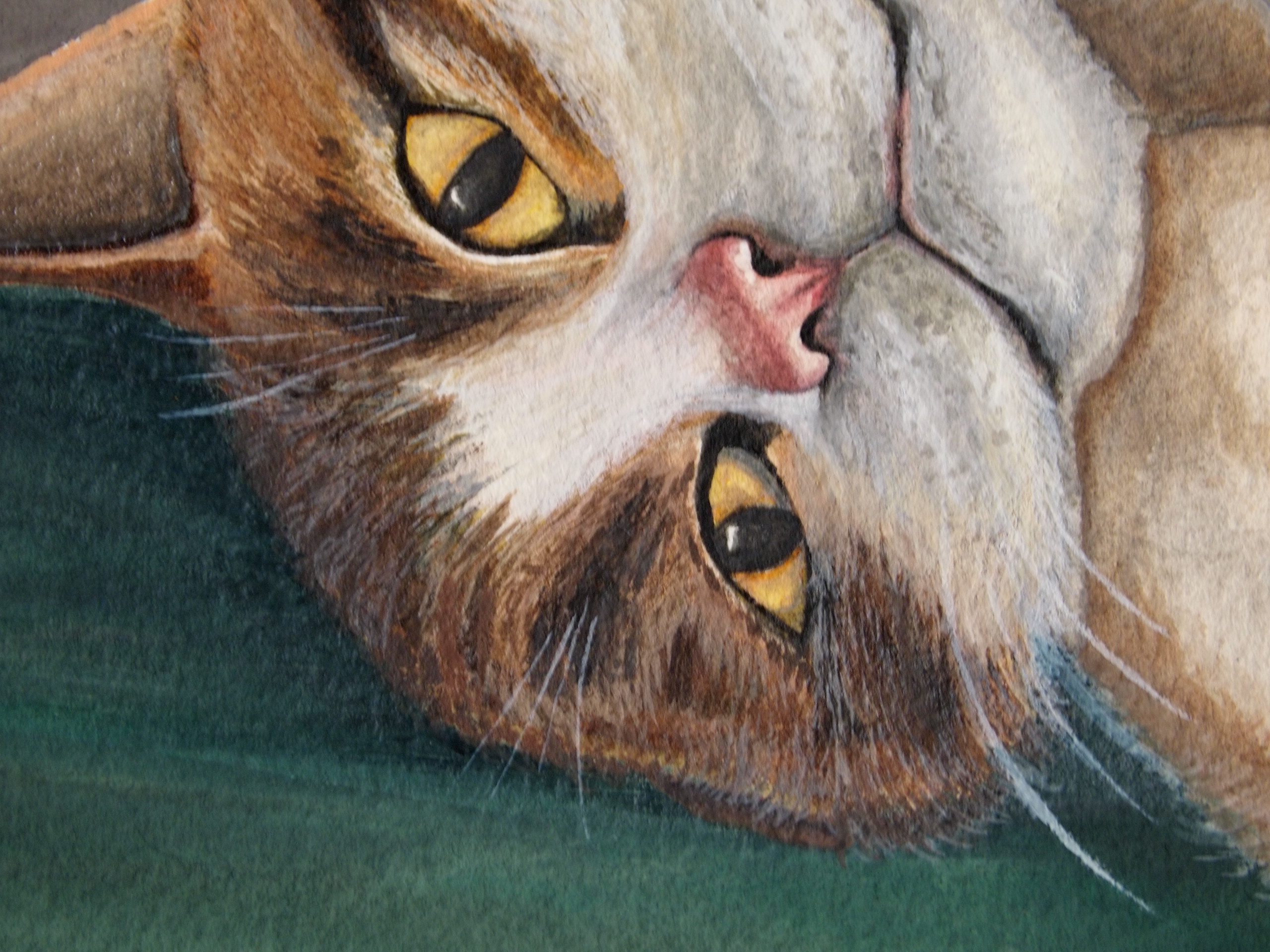
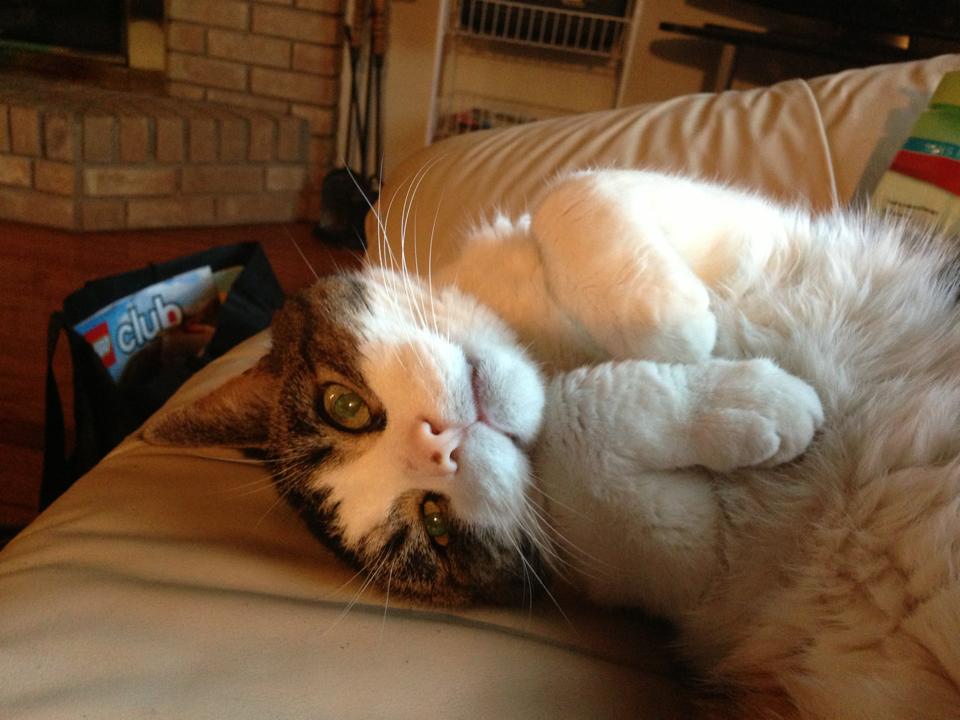.jpg)
In this Instructable I'll take you through the process I used to paint a watercolor portrait of our kitty Sammy. I don't have a ton of experience with watercolor, but you have to start somewhere. I am currently taking a painting class and so I can share with you the knowledge I've learned and take you through this if you are interested in painting a pet portrait.
This Instructable is dedicated to our sweet cat Sammy. He was about 15-years-old when we took him in for a relative and my son and I became very close with this kitty - that was two years ago. His mother was my cat when I was a teenager and when I went as an exchange student overseas in high school, my parents got rid of my cat right after I left. I was heart-broken - but taking in Sammy at his age felt like the right thing to do. I decided to paint a portrait of him based off of a photo that I love of him. Just a few days after I painted it - he became gravely ill and passed away - just a few weeks ago. This portrait is a nice way to memorialize a lost pet - or to capture memories of a living pet.
This Instructable is dedicated to our sweet cat Sammy. He was about 15-years-old when we took him in for a relative and my son and I became very close with this kitty - that was two years ago. His mother was my cat when I was a teenager and when I went as an exchange student overseas in high school, my parents got rid of my cat right after I left. I was heart-broken - but taking in Sammy at his age felt like the right thing to do. I decided to paint a portrait of him based off of a photo that I love of him. Just a few days after I painted it - he became gravely ill and passed away - just a few weeks ago. This portrait is a nice way to memorialize a lost pet - or to capture memories of a living pet.
Materials Needed
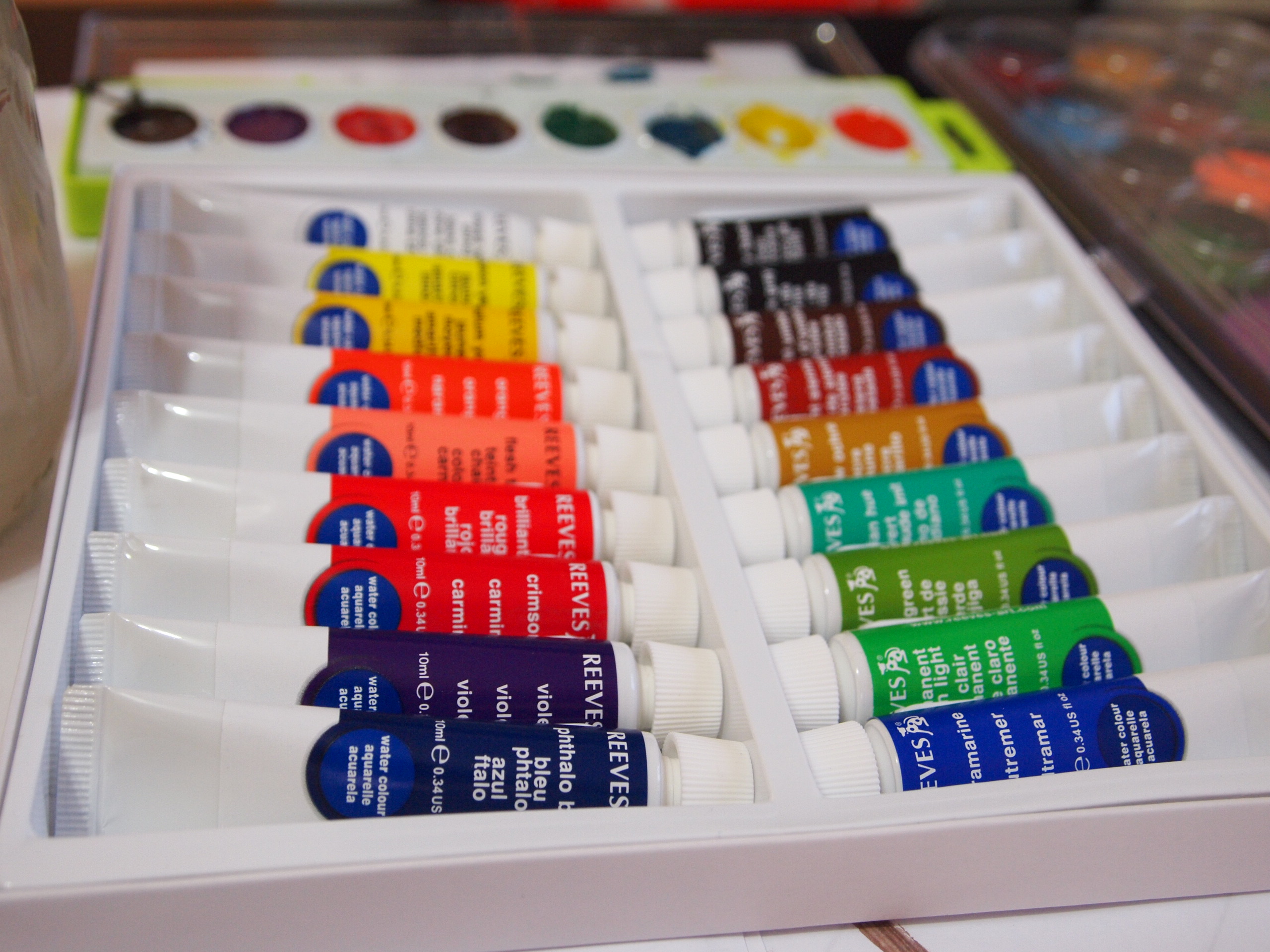
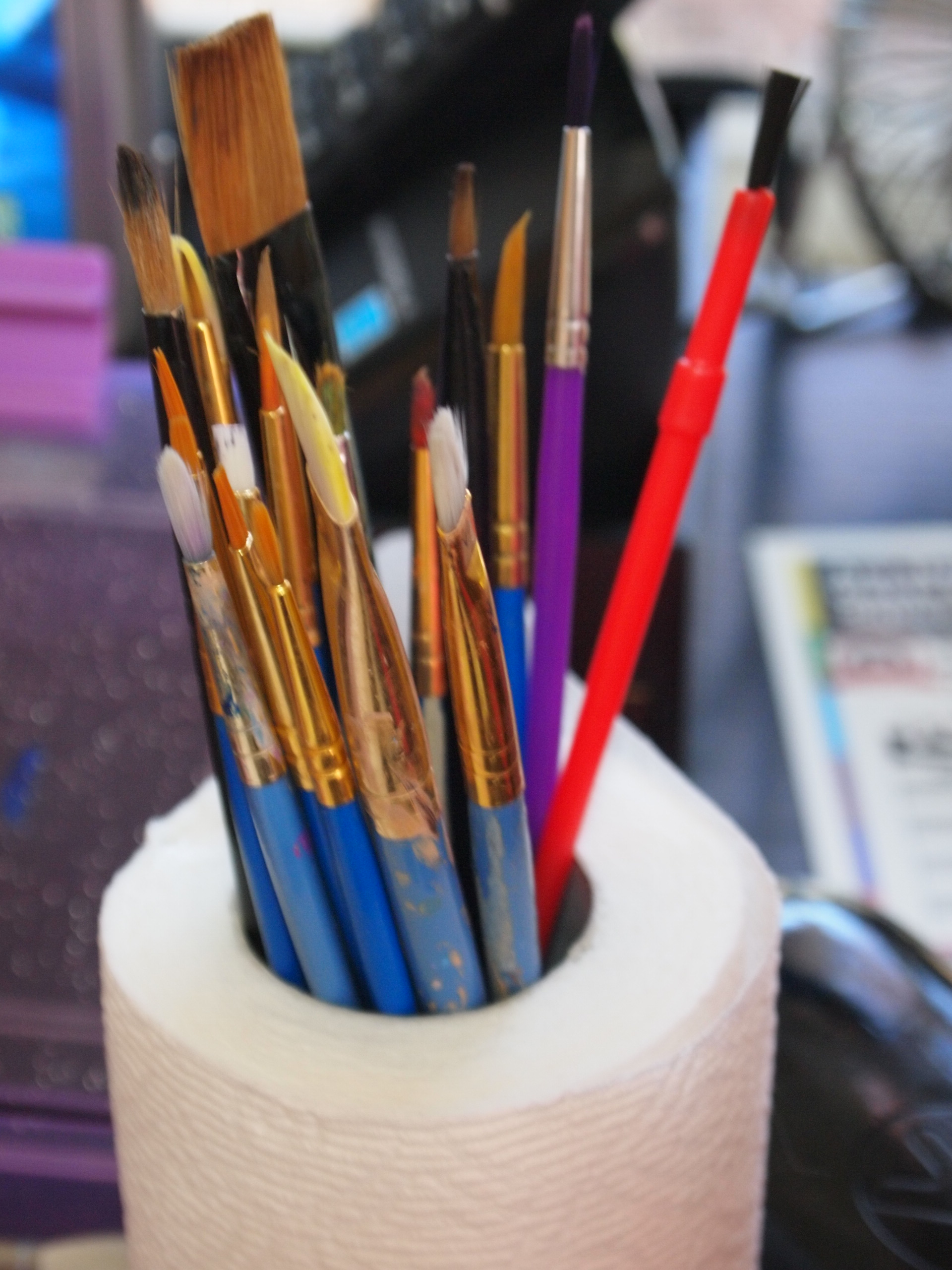
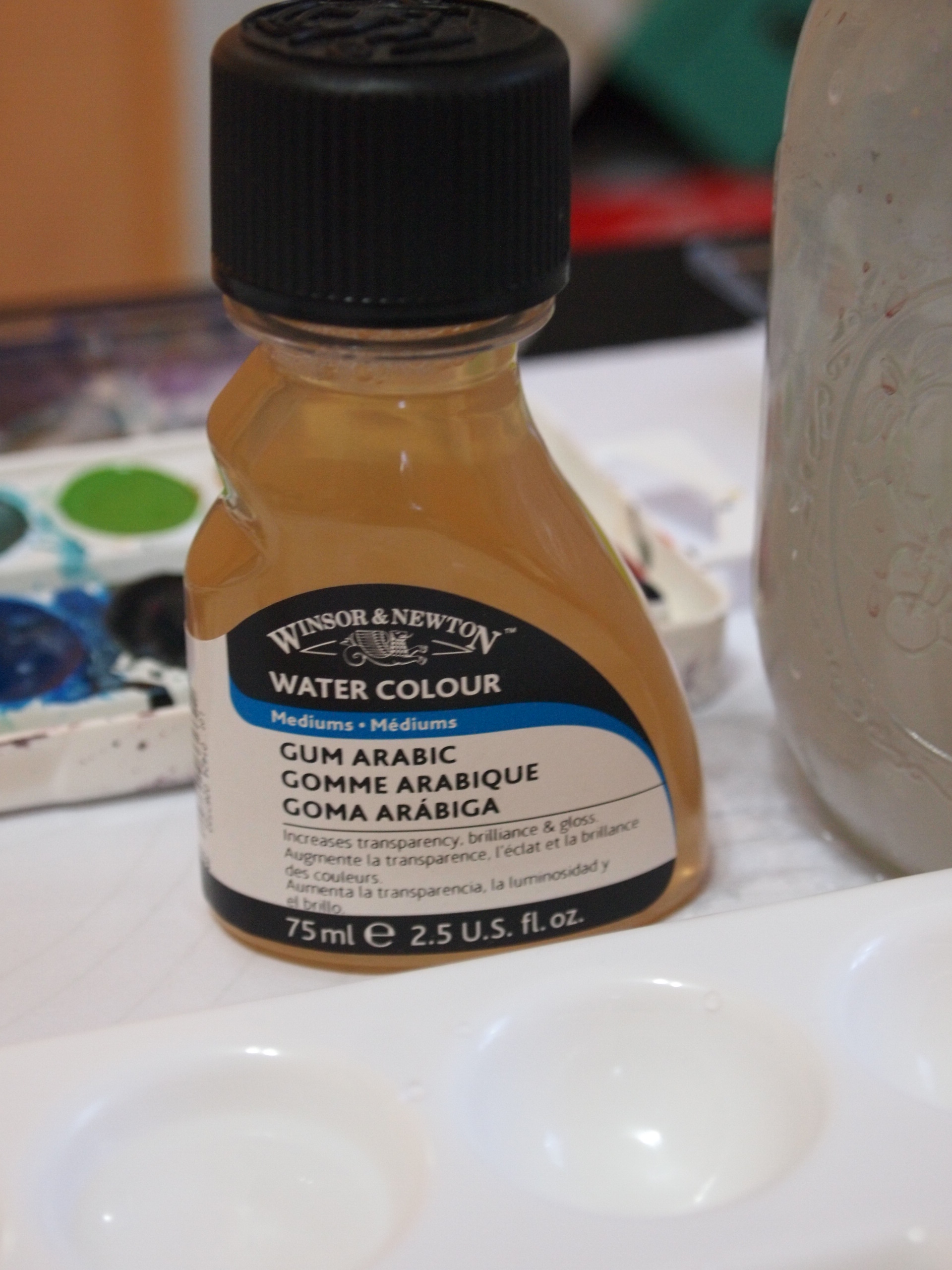

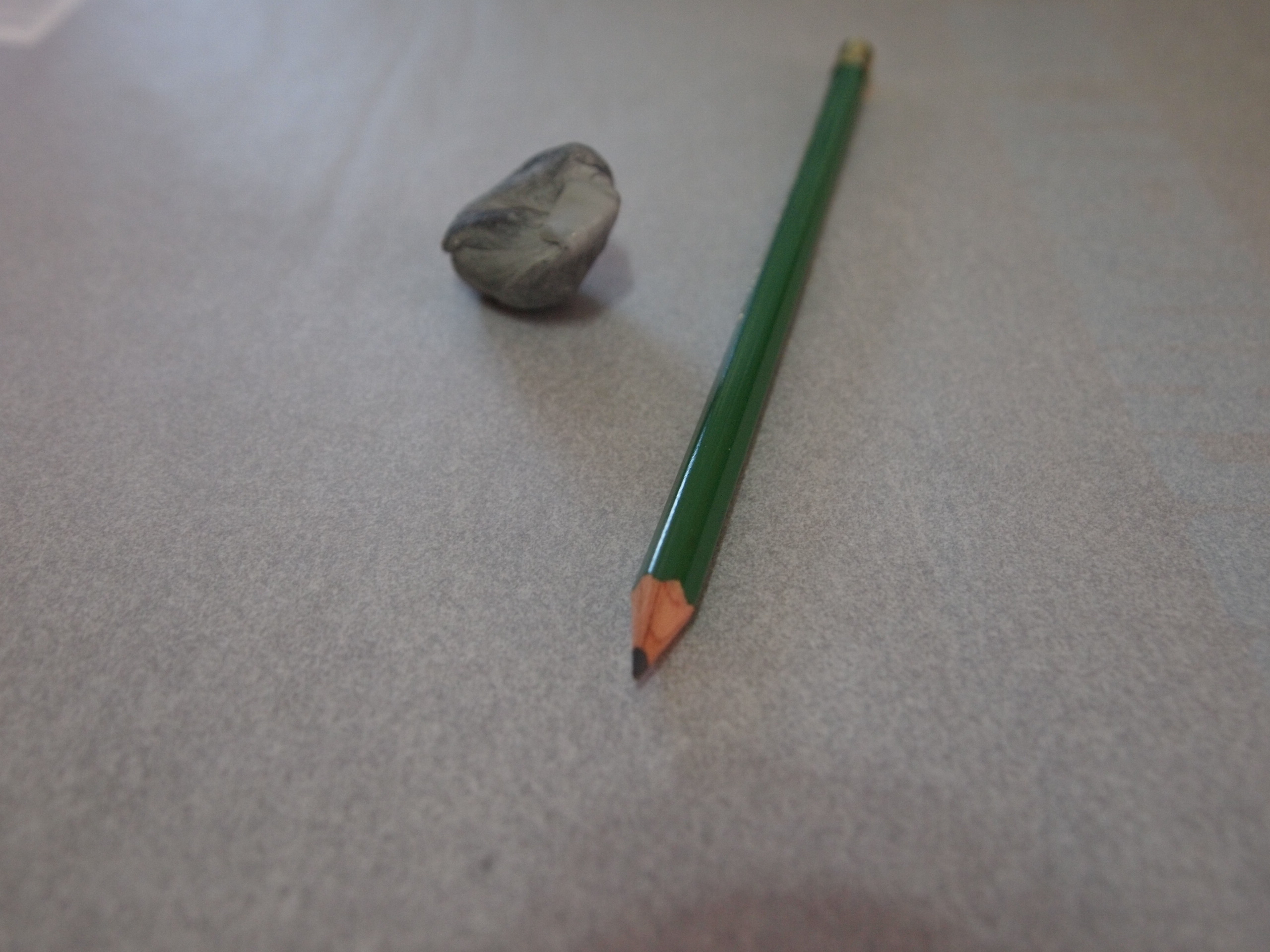
Materials
- Watercolor Paints & Palette
- Paint Brushes - be sure to have some fine detail brushes
- Portrait of your pet
- Tracing paper, pencil & eraser
- Watercolor Paper - The heavier/thicker, the better (I used 400 lb cold-pressed paper)
- Having good watercolor paper can make a huge difference
- You can buy it per-sheet at most hobby or arts & crafts stores (most stores have 40% off coupons also)
- To practice - you can buy a cheaper, lighter pad of watercolor paper at the art store also
- *Gum Arabic - Optional
- It is said to increase the fluidity of the paint and create a somewhat more glossy sheen look
- It is recommended to make up a solution of 10% gum Arabic with 90% water and use this with your colors as you would water alone
- I've also read that when you use it and the paint dries - you can more easily go back to your work if needed - to remove areas of paint by re-wetting - I've had success with this
- It is said to increase the fluidity of the paint and create a somewhat more glossy sheen look
- *Gouache - Optional
- Gouache is a more opaque paint that is similar to watercolor
- I didn't use gouache in this portrait but if I had lived closer to the art store I would have bought it and used it
- I recommend buying only the white - as it will be useful for painting the fine details of the whiskers and fur
- Gouache is a more opaque paint that is similar to watercolor
Preparing the Pet Portrait, Tracing & Transferring
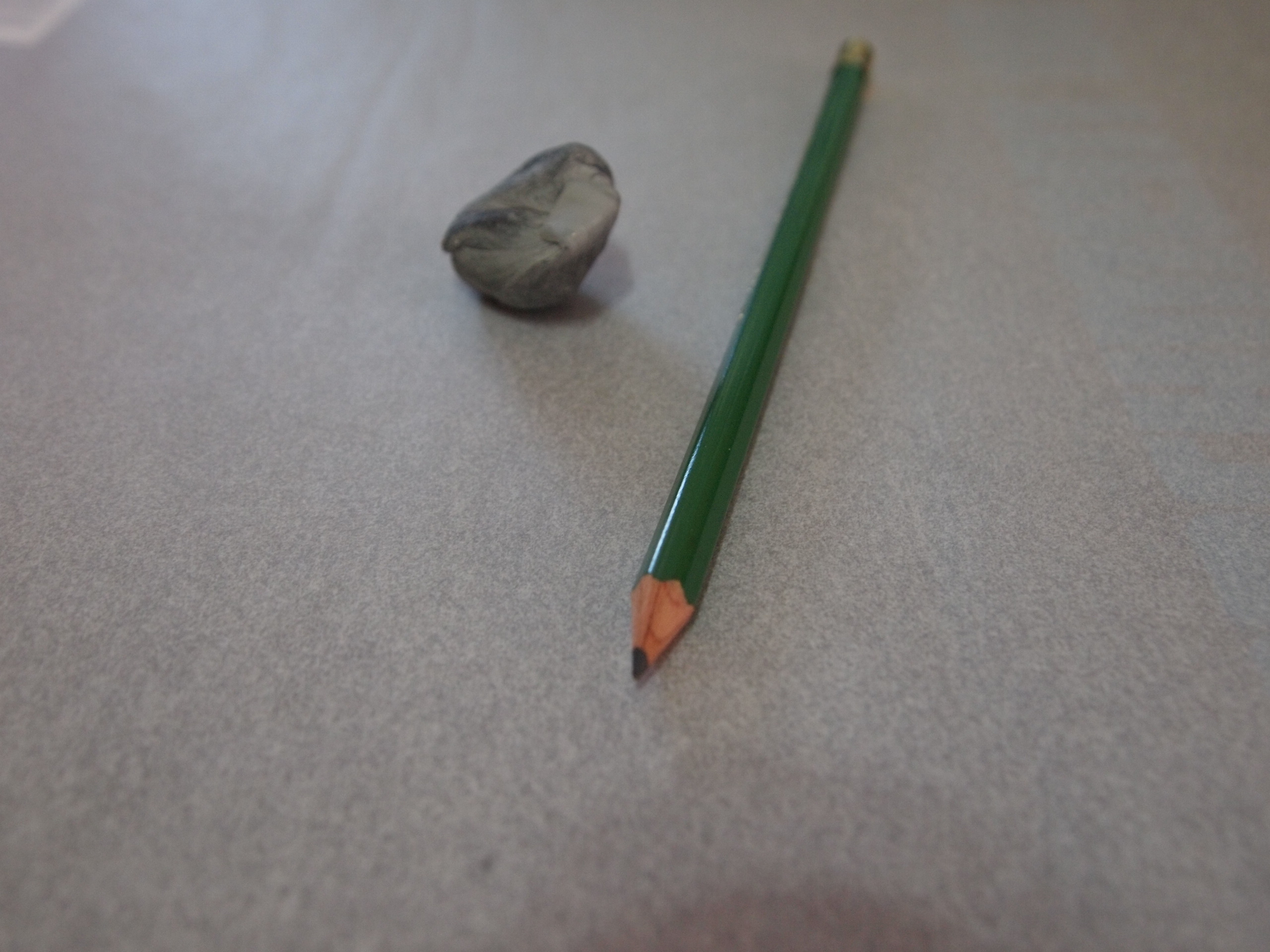
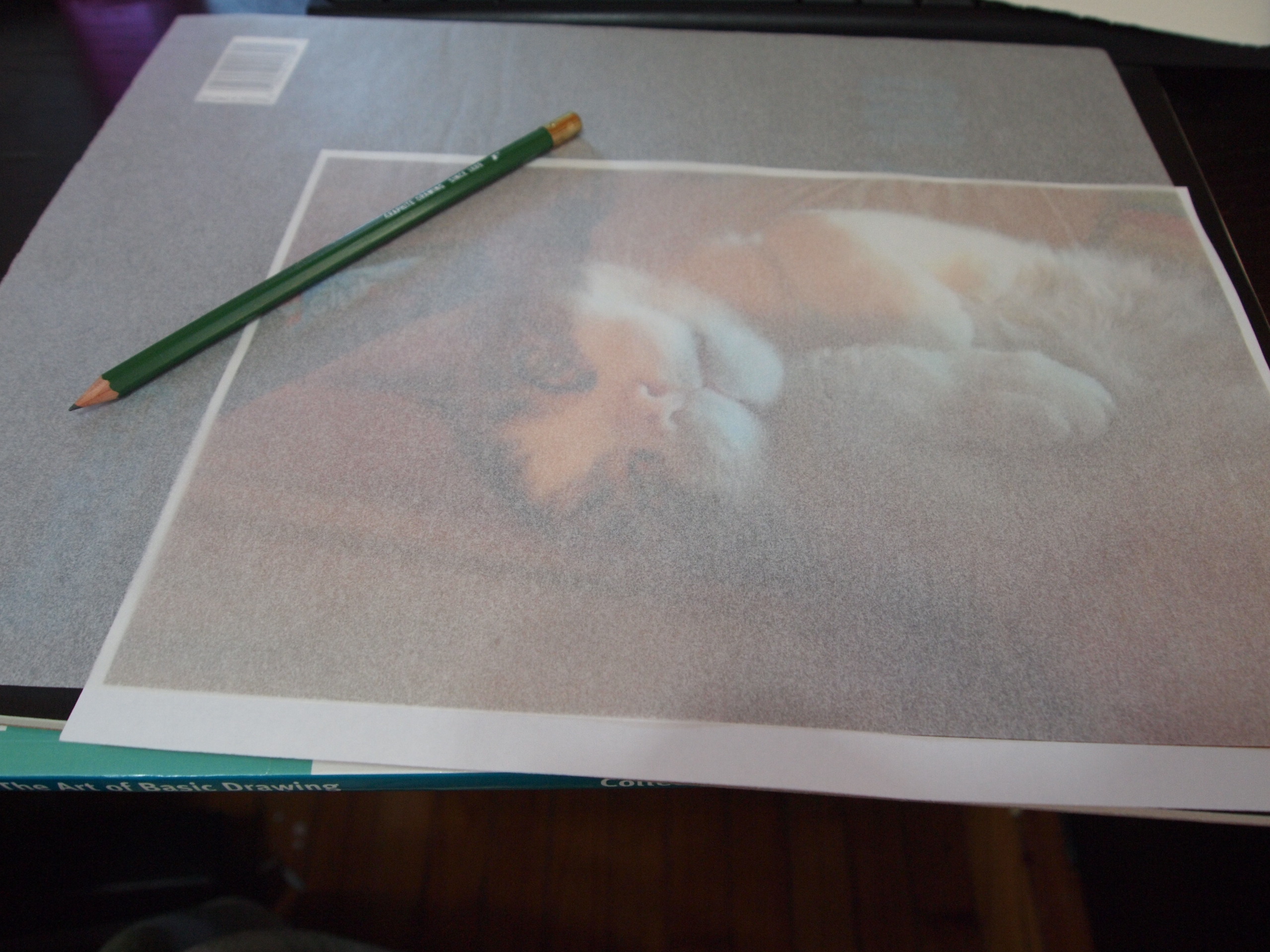
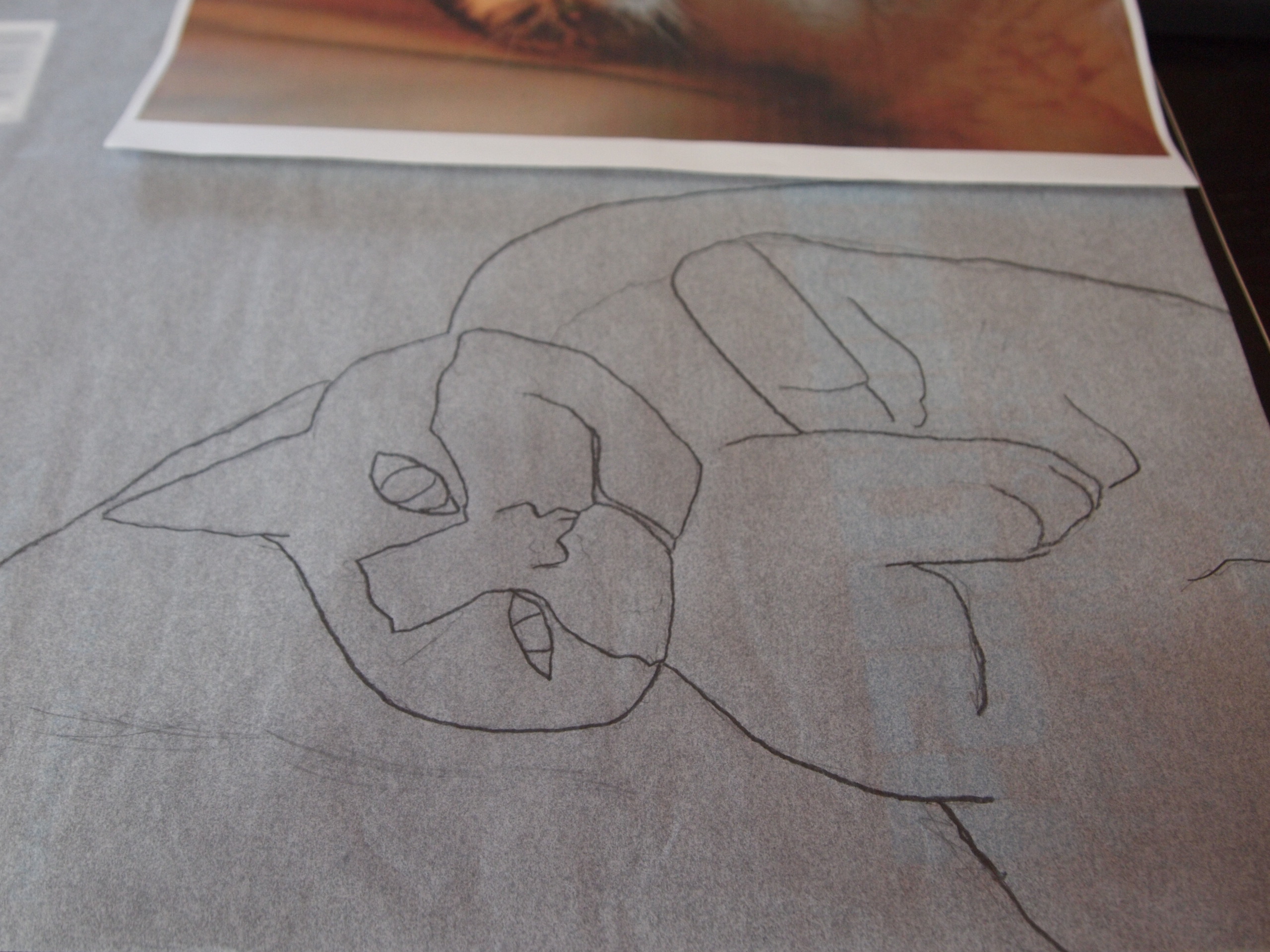
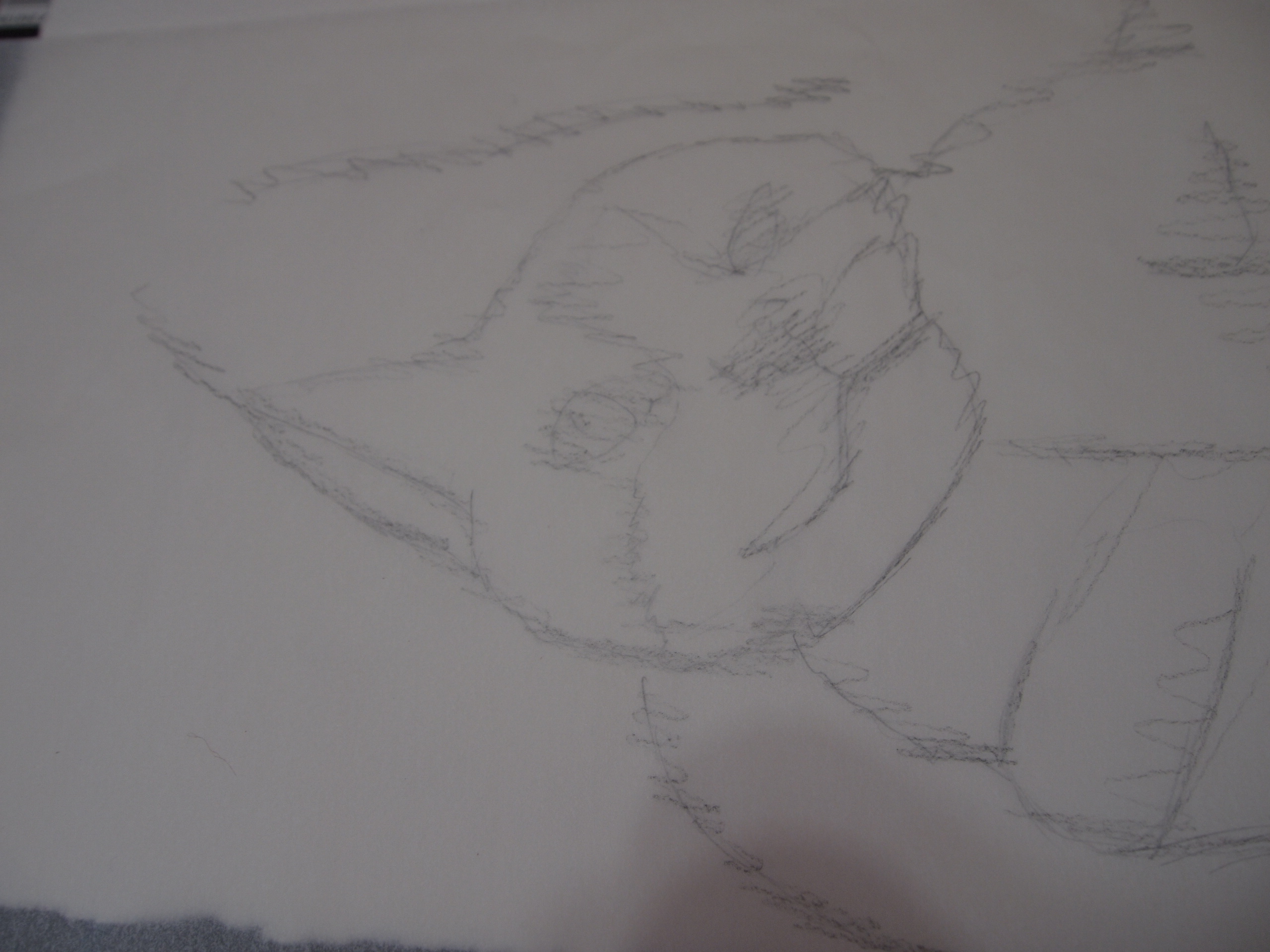
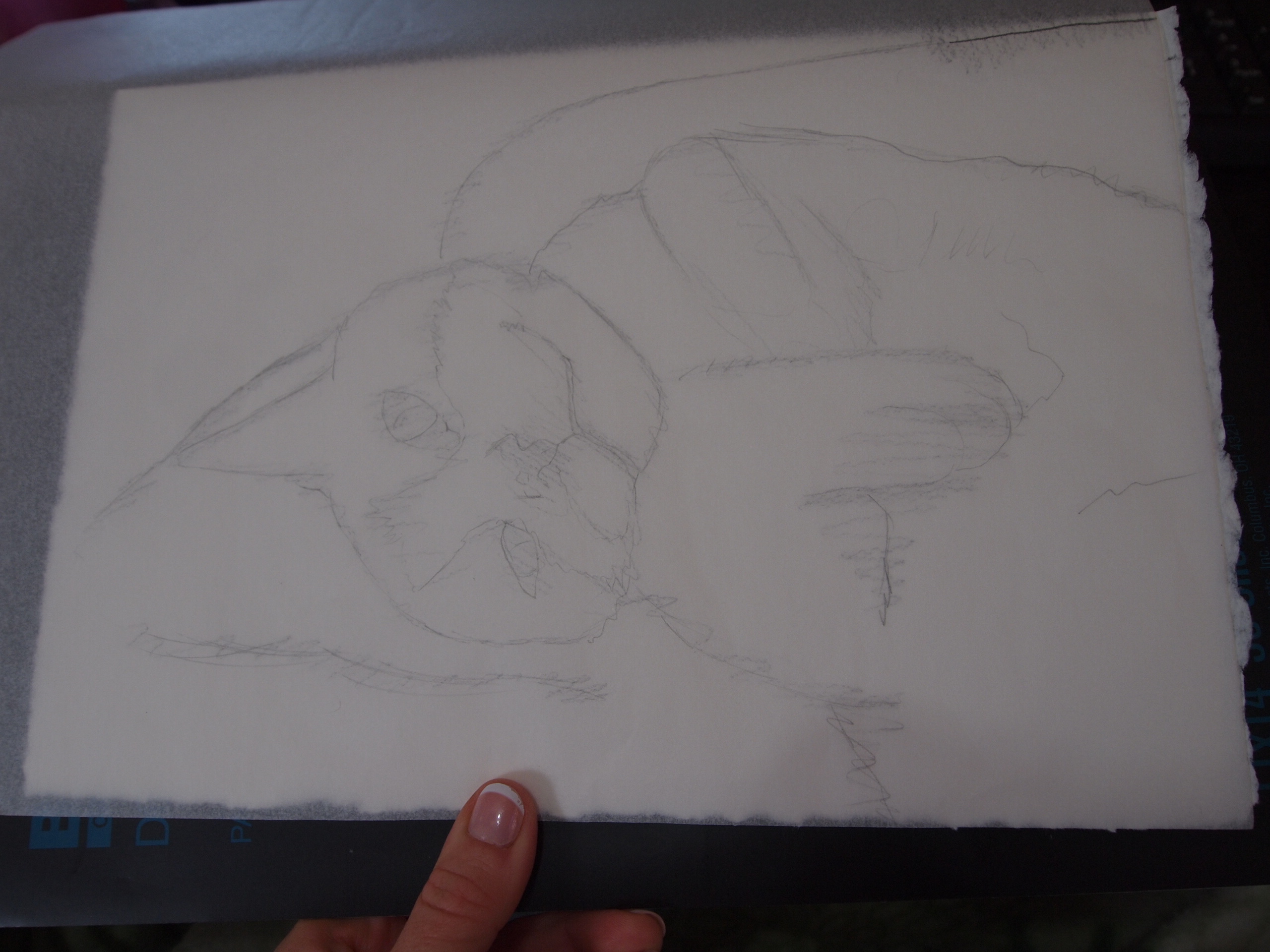
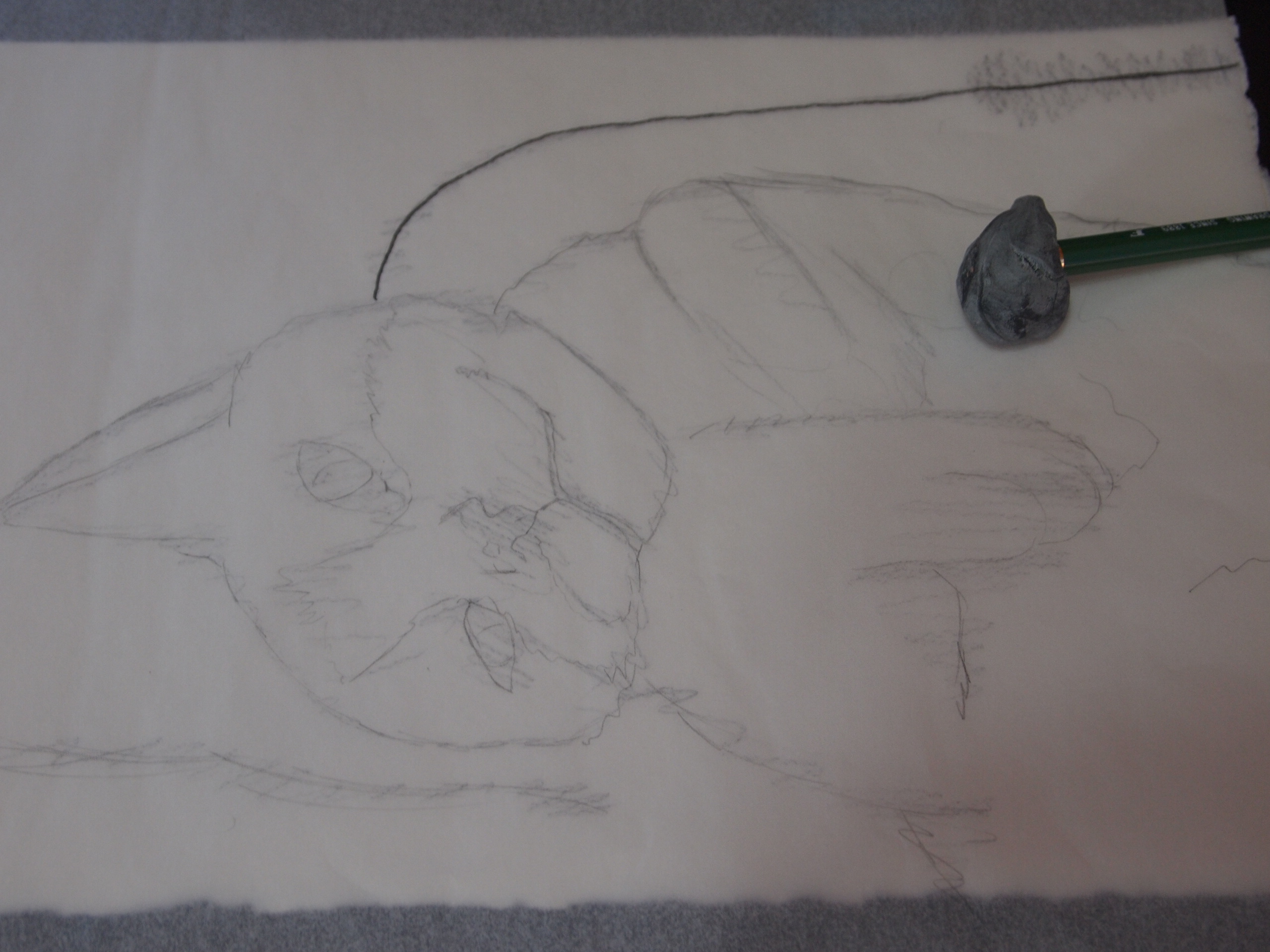
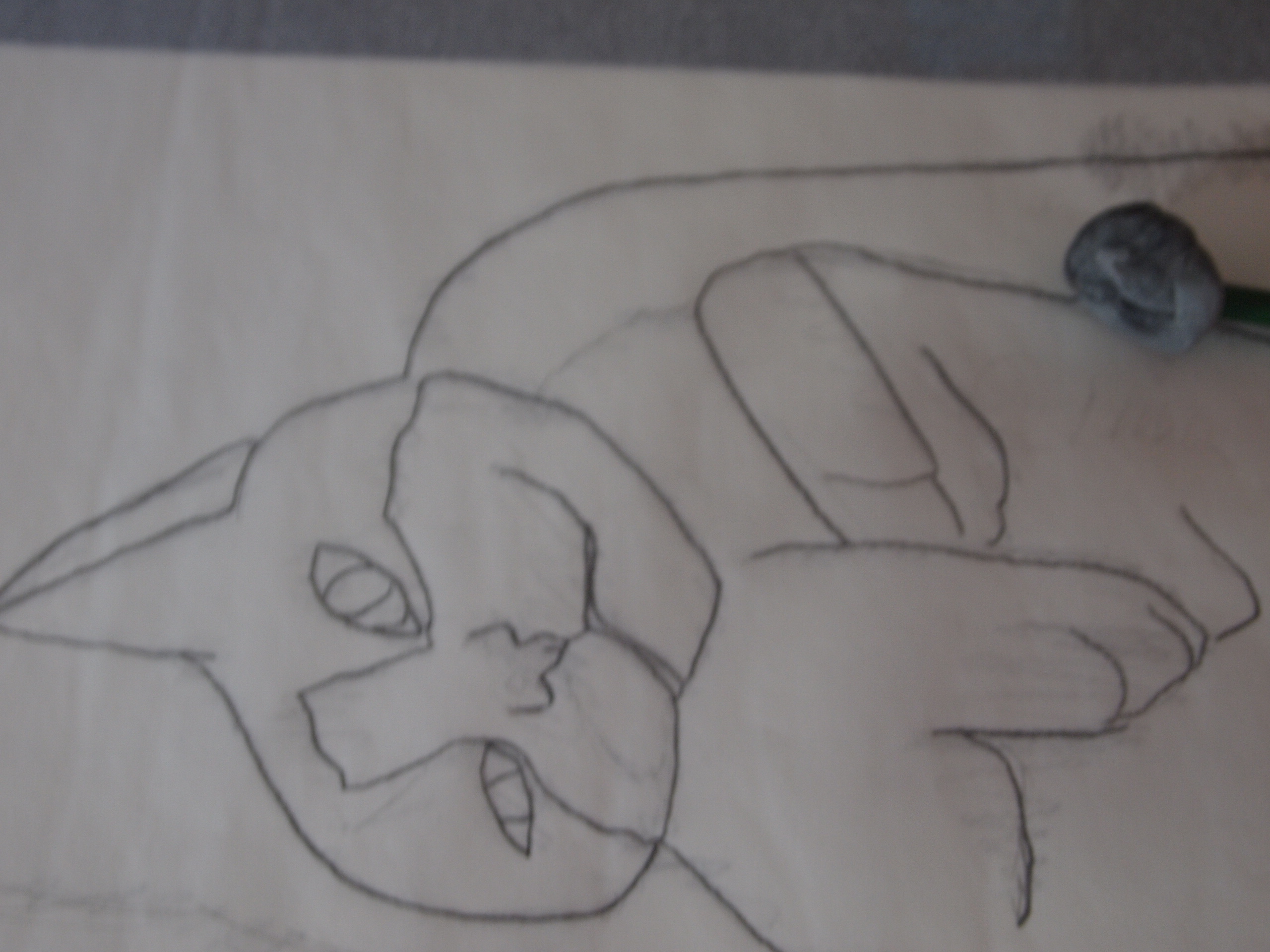
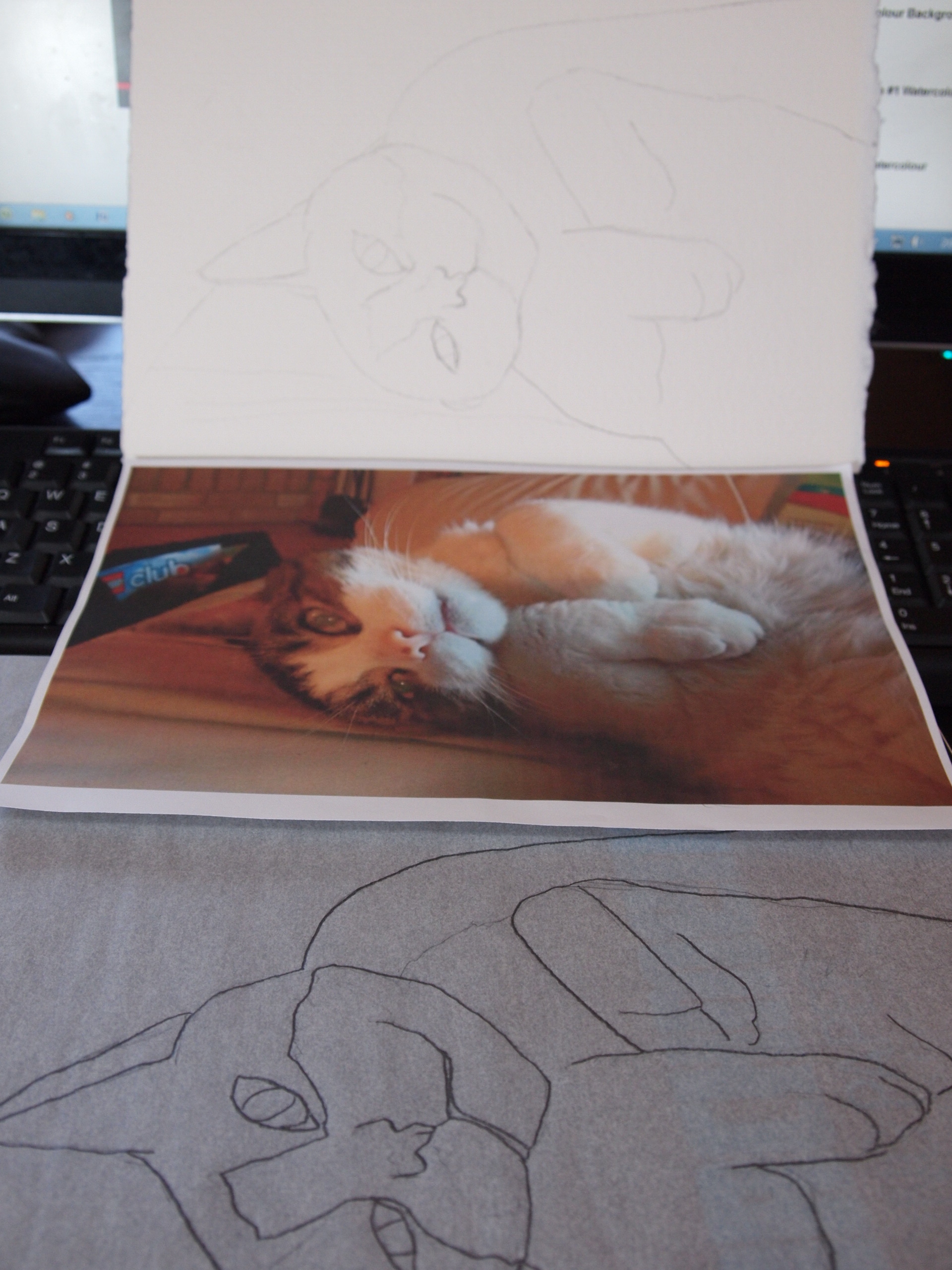
Portrait & Paper
Tracing
First, you'll need to figure out how big you want the portrait to be. If you want it larger than a standard printer-sized paper, then you'll need to get it printed somewhere and you'll need to get a pad of tracing paper that is large enough. Also, you'll need to cut your watercolor paper to the size you want it to be. The 400 pound paper is very tough to cut through.
Tracing
I printed my pet portrait out on a standard-size sheet of paper. After that, I lightly taped a piece of tracing paper onto it. I traced the major lines and basic details of the cat with a pencil - putting pressure to make the lines fairly dark. Of course if you are artsy and good at drawing, you could always draw it out yourself. But, a lot of painters use methods similar to this - either way is fine.
Transferring
Now flip your traced image over so you can see the back side of it. You'll be able to see through it fairly well. In the areas where you have traced lines, you'll want to use the side of the tip of the pencil to shade those areas on the back of the tracing paper. You may want to use a softer or darker pencil if you have one (4B or 6B) - but even a 2B standard pencil will work alright.
Once you've shaded or scribbled over the back side of the tracing paper over the areas you had drawn lines, then you can place it onto your piece of watercolor paper (right-side up). Figure out where you want it placed and you can tape it down lightly. After that, once again take your pencil and go over your drawn lines on the front-side of the tracing paper. As you do this, the graphite on the back of the tracing paper will transfer onto your watercolor paper. You will also see some indentation wherever you are pushing the pencil and drawing over the lines. It may not produce super-dark lines - but it should be visible enough.
Finally, go over those light lines with the pencil directly onto the watercolor paper and then you're ready to start painting.
Once you've shaded or scribbled over the back side of the tracing paper over the areas you had drawn lines, then you can place it onto your piece of watercolor paper (right-side up). Figure out where you want it placed and you can tape it down lightly. After that, once again take your pencil and go over your drawn lines on the front-side of the tracing paper. As you do this, the graphite on the back of the tracing paper will transfer onto your watercolor paper. You will also see some indentation wherever you are pushing the pencil and drawing over the lines. It may not produce super-dark lines - but it should be visible enough.
Finally, go over those light lines with the pencil directly onto the watercolor paper and then you're ready to start painting.
Starting the Portrait - Paint Tips
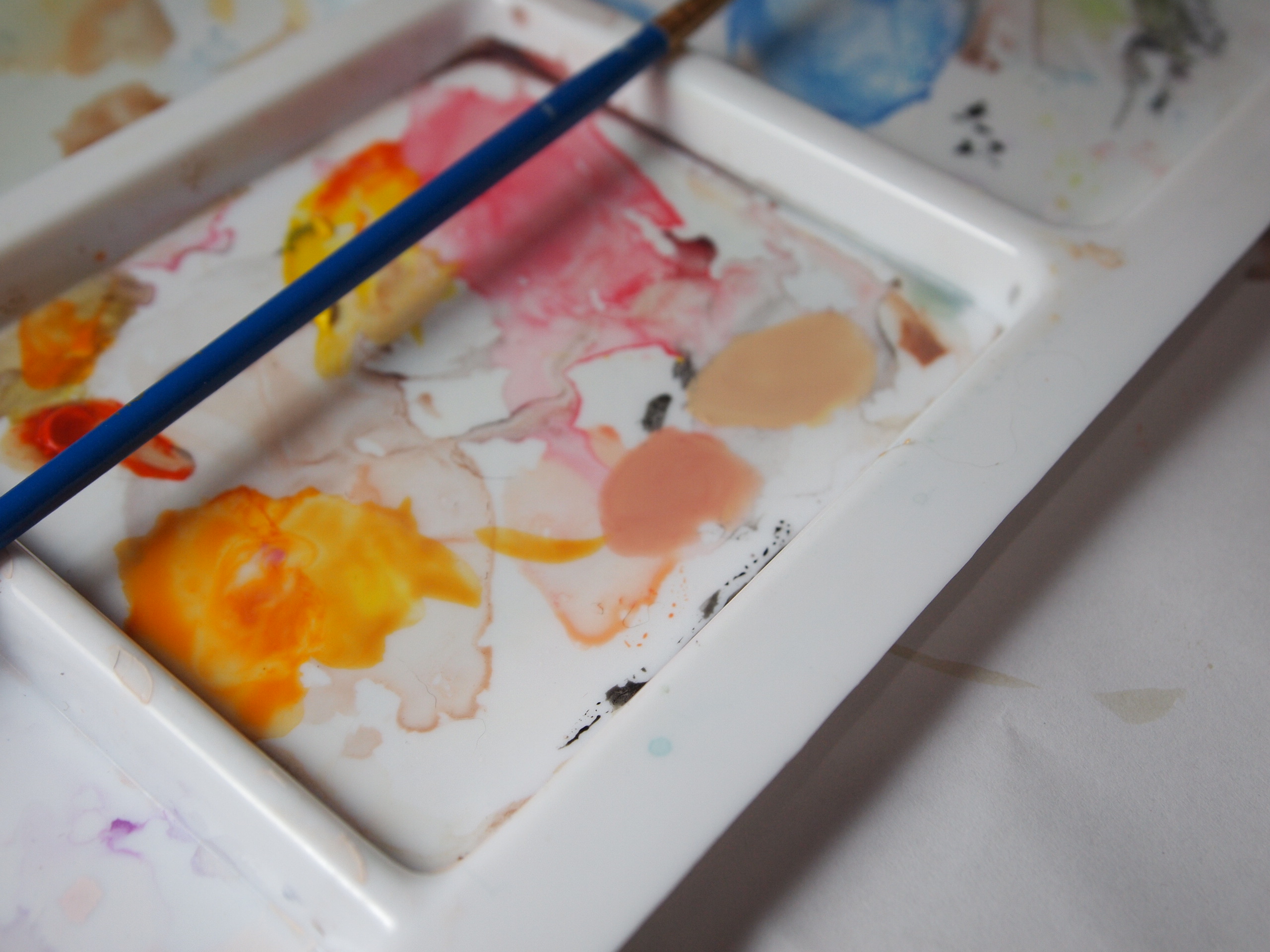
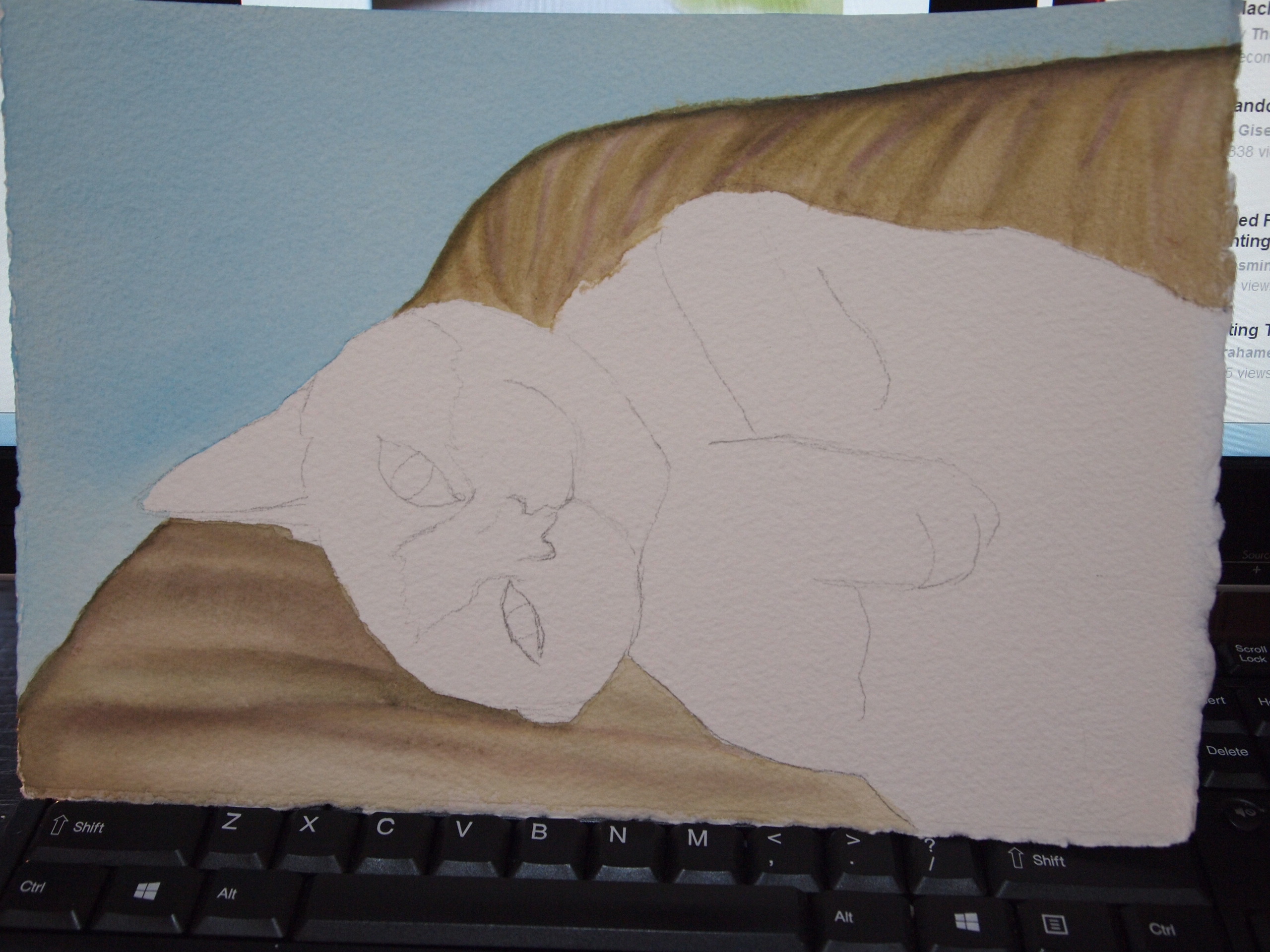
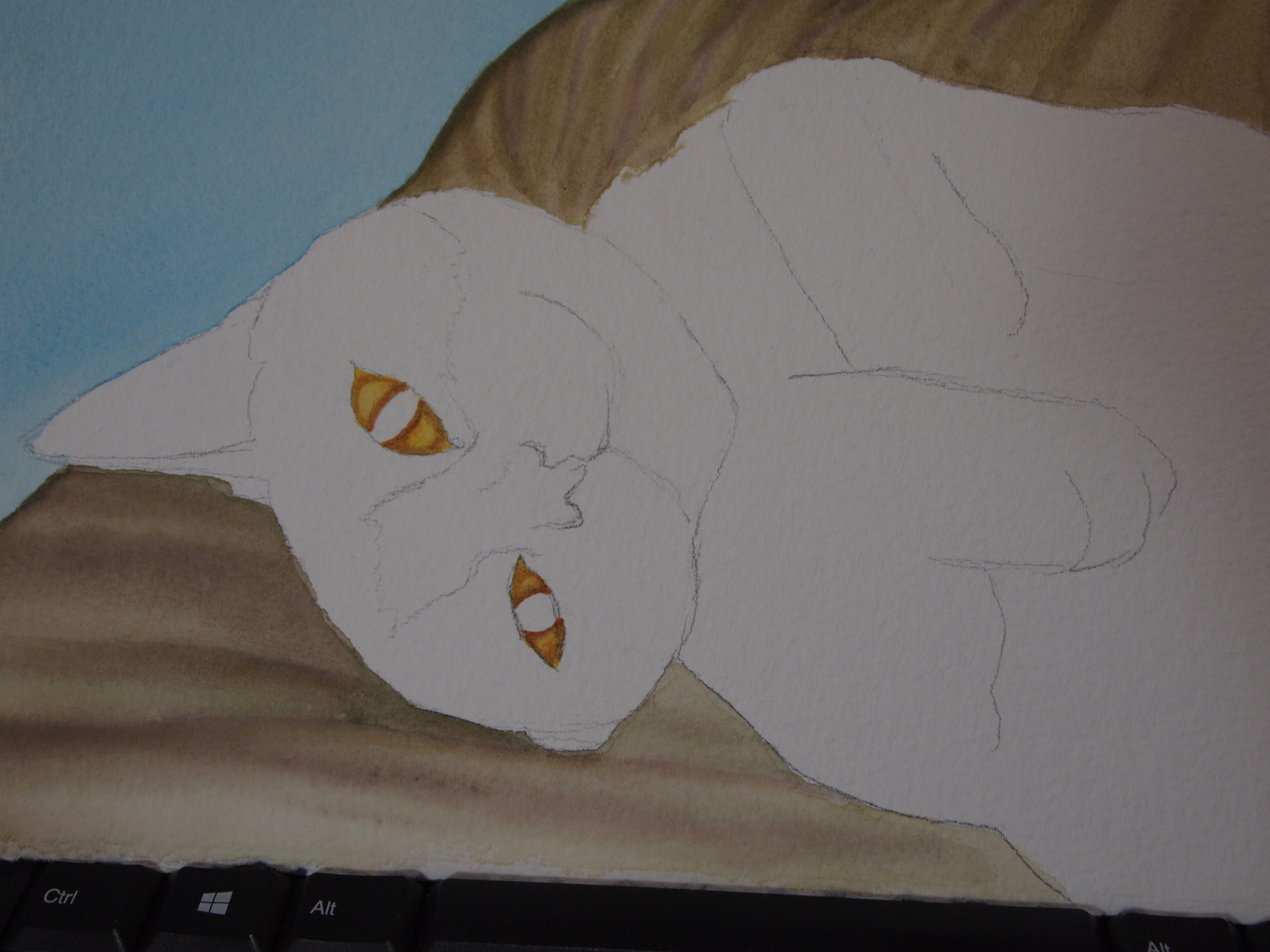
To start your portrait, first get your paint organized and have a palette to put it on. Before I had the tubes of watercolor paint, I only had my son's cheap grade school one. It's best to use the tube paint. Please be careful not to squeeze out too much. The great thing about watercolor paint is how long it lasts! You only need a tiny amount of it (about the size of a pencil eraser) and put that on the palette. Put some water in a big jar or cup and also put some water in the palette as well. You will need lots of water! Once the paint dries on the palette - you can still use it later. Just add some water to your brush and mix it onto that hardened paint and it's usable again!
As a tip - please note that "less is more" with watercolor painting. If there are areas where you want to have highlights - be careful where you place the paint or leave that area as it is until later. I didn't overdo it with the watercolor painting on the nose of the cat - and the natural paper coming through made it look super realistic and highlighted in just the right spots.
I started out by painting the background. I ended up not liking it so much - and overdid my painting by going over it - then not liking that - and doing it again. The end result was a rather dark background - but I still really like how it turned out. Just note that it's hard to remove it once it's done with watercolor - especially the way I went over the background repeatedly.
Be sure to pay attention to contrast - this is what will make your painting come to life and look real. You don't always need to paint on lines or outline an object or features of your pet. If the pets fur is white in an area it's a good idea to have the area surrounding the pet's fur, a darker color. It will help to make the picture pop out more. Once I did the very bare and basics of the background - which I later changed anyway, I then began by painting the cats eyes.
For the eyes I did a layer of yellowish-orange. Then around it you can see I did a darker orang-ish color. I later go back to finish it up.
As a tip - please note that "less is more" with watercolor painting. If there are areas where you want to have highlights - be careful where you place the paint or leave that area as it is until later. I didn't overdo it with the watercolor painting on the nose of the cat - and the natural paper coming through made it look super realistic and highlighted in just the right spots.
I started out by painting the background. I ended up not liking it so much - and overdid my painting by going over it - then not liking that - and doing it again. The end result was a rather dark background - but I still really like how it turned out. Just note that it's hard to remove it once it's done with watercolor - especially the way I went over the background repeatedly.
Be sure to pay attention to contrast - this is what will make your painting come to life and look real. You don't always need to paint on lines or outline an object or features of your pet. If the pets fur is white in an area it's a good idea to have the area surrounding the pet's fur, a darker color. It will help to make the picture pop out more. Once I did the very bare and basics of the background - which I later changed anyway, I then began by painting the cats eyes.
For the eyes I did a layer of yellowish-orange. Then around it you can see I did a darker orang-ish color. I later go back to finish it up.
Painting in the Dark Areas & Basic Details
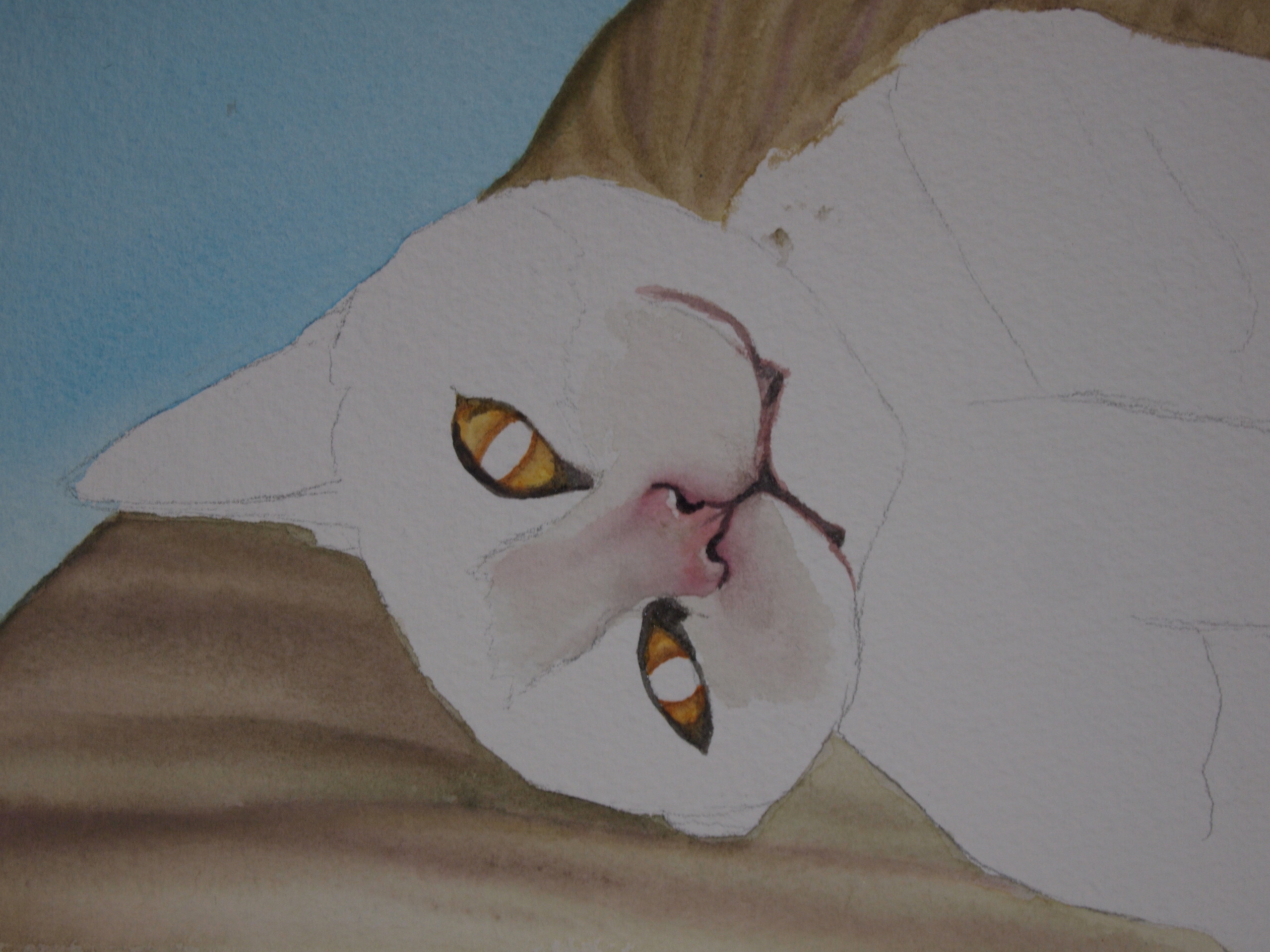
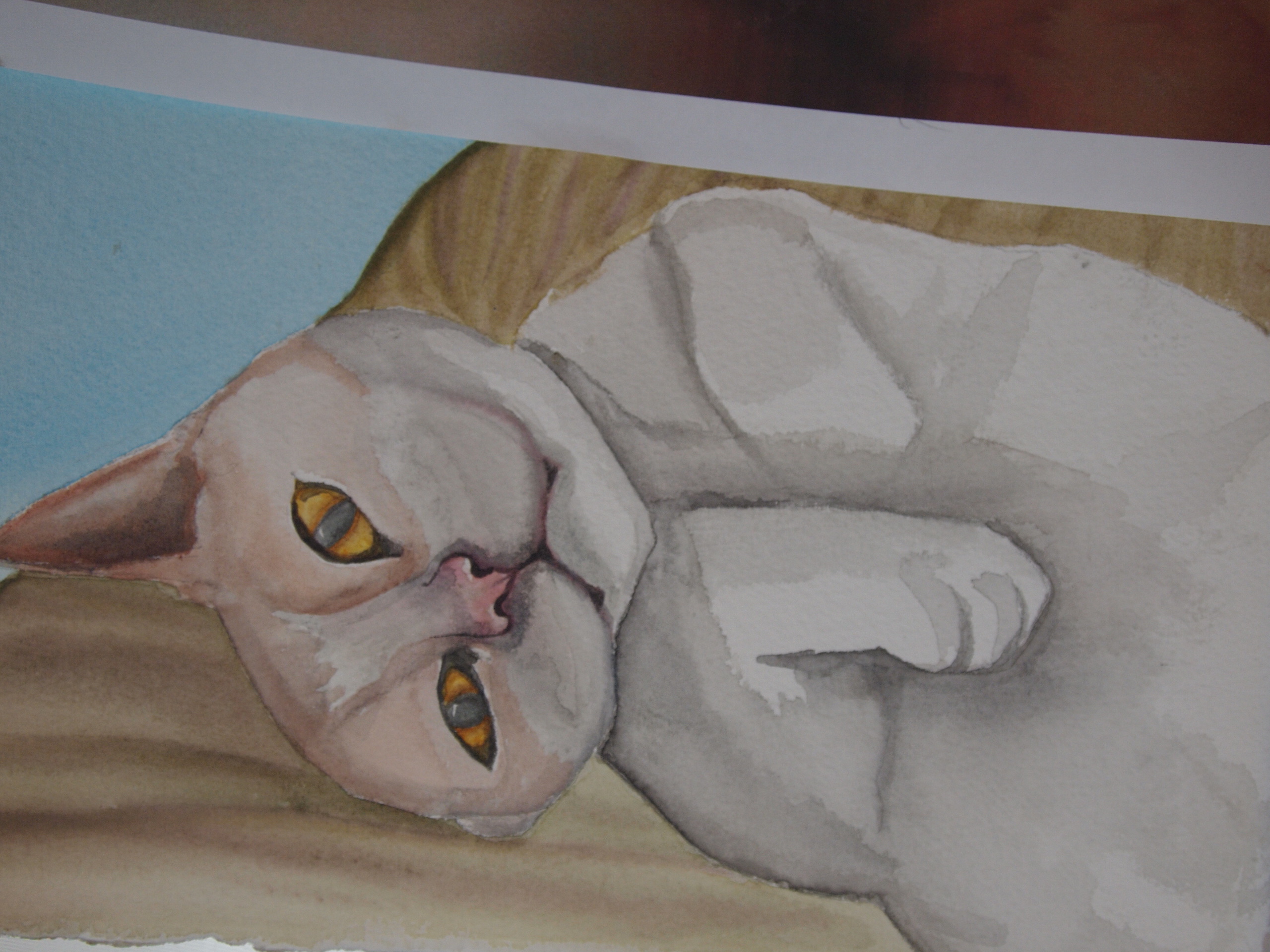
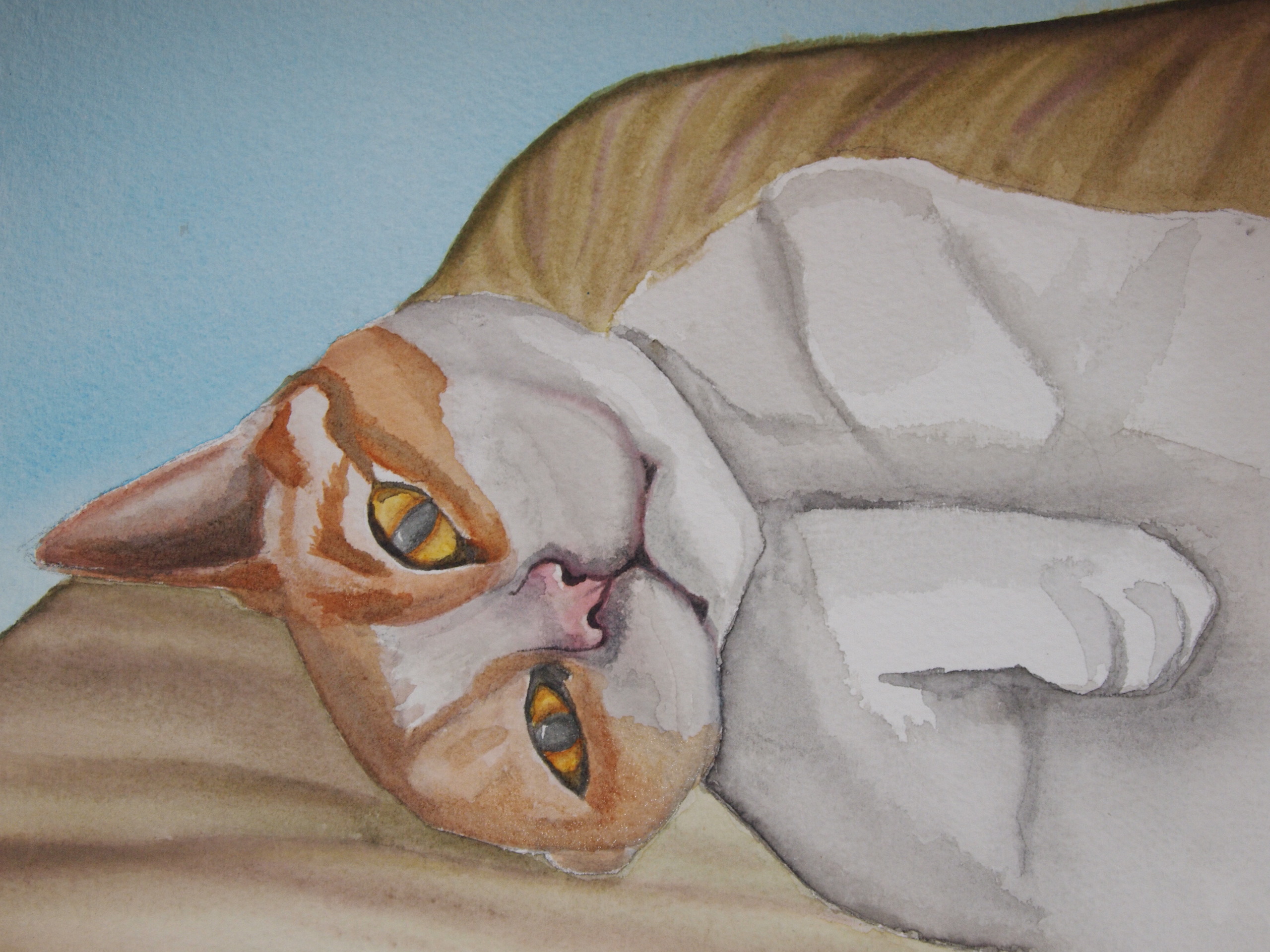
I then began to paint in the basic details of the face and all major areas of color that I noticed. You'll want to create a wash, or very watered down paint to cover the major areas of color first. All you need to do is add a lot of water to that particular color and really take a close look at the photo to see areas of the pet that have that color.
I initially create a grey wash to go over the body of the cat. Then, I went in with a less watered-down wash of grey (a little darker) to add in more details of the body and around the paw. If you see shadows in certain areas on your photo, just paint it in as you see it. You may think - "wow, that looks weird I can't paint that," but don't listen to that side of your brain - just paint it as you see it. If there are large areas of white, just leave it alone as the paper will show through in those areas and produce a brilliant white.
Once all of the very basic colors are painted in with washes, then you can go back in and paint over some areas on the face with another wash - less watered down again (see image please). You won't be painting in details of the fur until later. As you paint, if you want the edges softer, just wet your clean brush with a little water and apply that to the paper along those edges and move the brush around to soften them.
I initially create a grey wash to go over the body of the cat. Then, I went in with a less watered-down wash of grey (a little darker) to add in more details of the body and around the paw. If you see shadows in certain areas on your photo, just paint it in as you see it. You may think - "wow, that looks weird I can't paint that," but don't listen to that side of your brain - just paint it as you see it. If there are large areas of white, just leave it alone as the paper will show through in those areas and produce a brilliant white.
Once all of the very basic colors are painted in with washes, then you can go back in and paint over some areas on the face with another wash - less watered down again (see image please). You won't be painting in details of the fur until later. As you paint, if you want the edges softer, just wet your clean brush with a little water and apply that to the paper along those edges and move the brush around to soften them.
The Furry Details
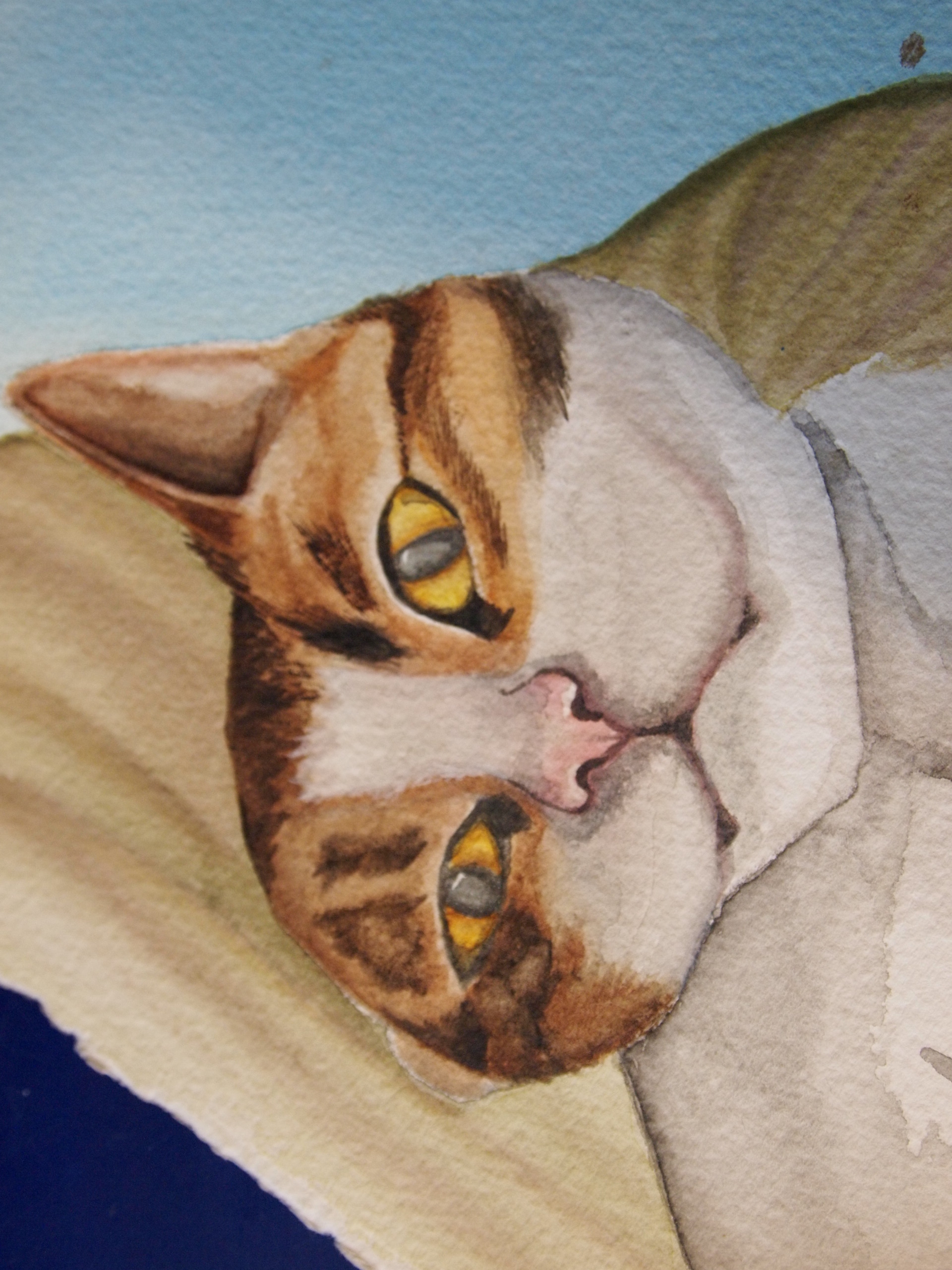
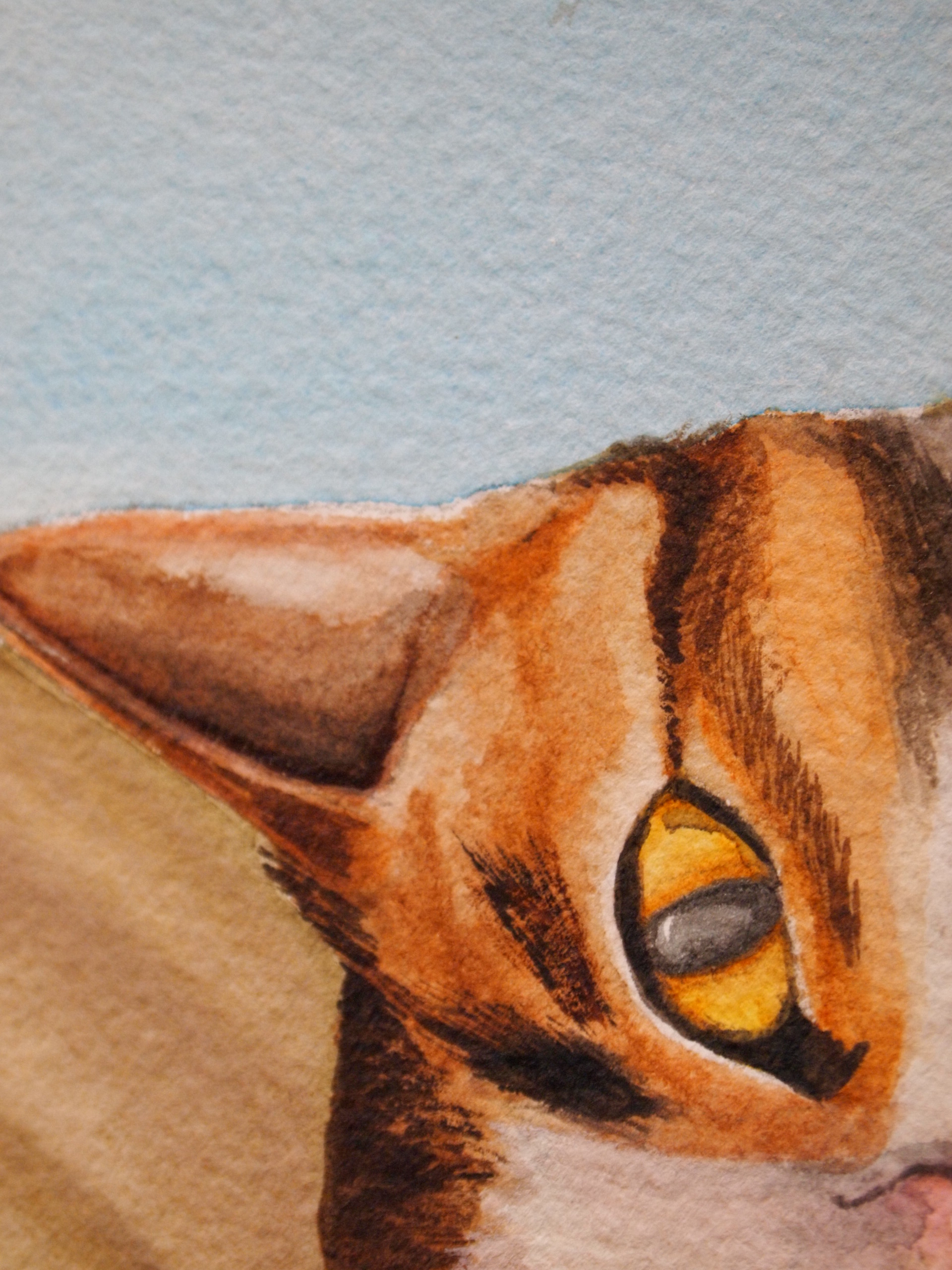
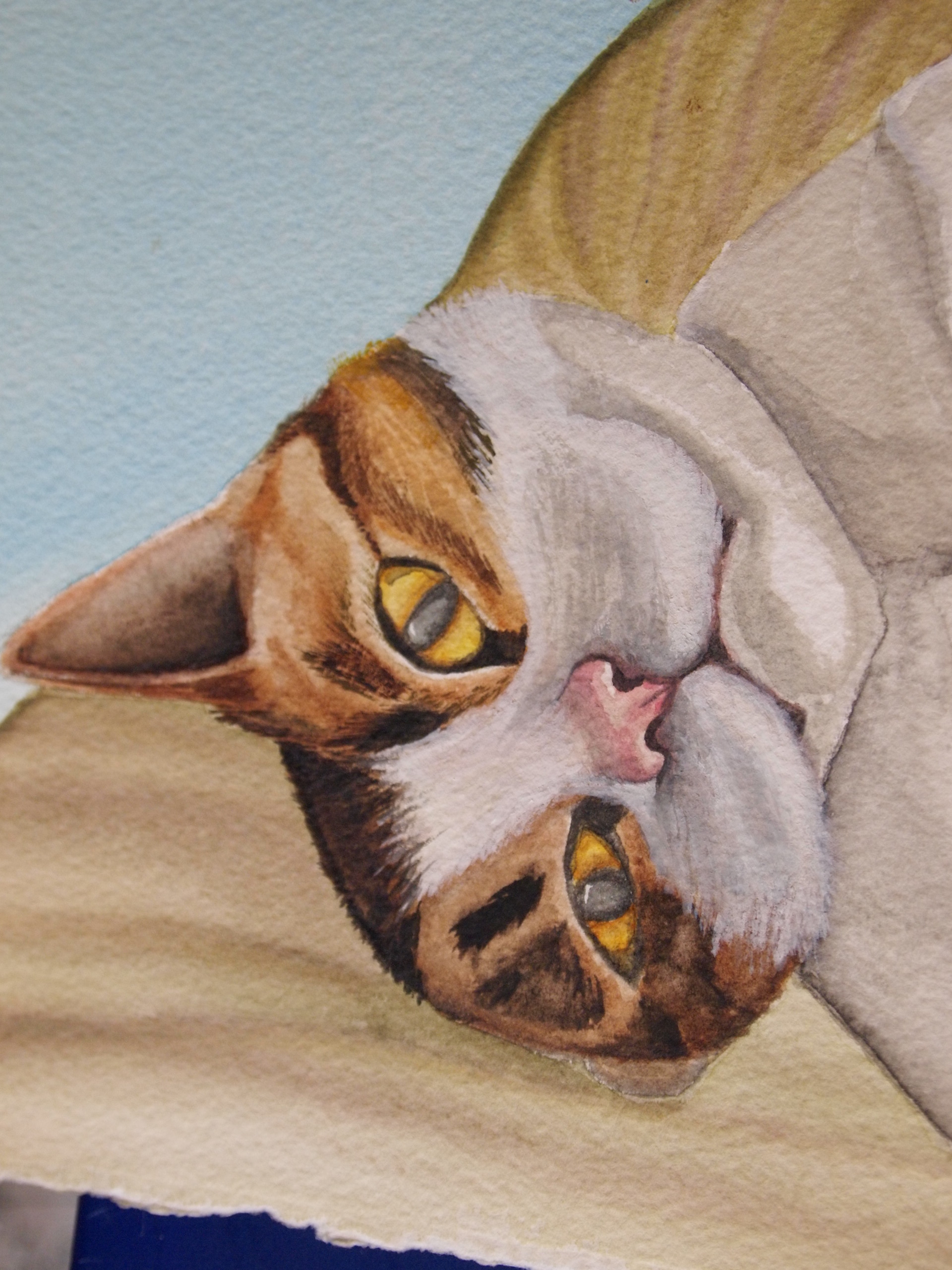
Once the main colors are laid out and some of the details are painted in, you can now start to paint the fur in. You can see in the images that I started by painting in the fur of the darker areas on the face. I used much less water with the paint to create a more opaque watercolor effect for the fur. I used a super fine detailed brush and went over the areas of dark hair first - small strokes in the direction of hair growth. When you first start to do this, you may look at it and think it doesn't look right. This is normal. You really need to continue on with your painting of the fur for it to take shape properly. It also helps to do some more painting and then step back about 6 feet to see it from a distance - it makes a huge difference.
In the last photo here you can see that the shape of the top of the head, in between the ears - is very straight and rigid. It doesn't look real at this stage of the painting because in reality he has fur going all over the place and it doesn't lie so perfectly and flat. Once we keep painting layers of fur - it will look real.
In the last photo here you can see that the shape of the top of the head, in between the ears - is very straight and rigid. It doesn't look real at this stage of the painting because in reality he has fur going all over the place and it doesn't lie so perfectly and flat. Once we keep painting layers of fur - it will look real.
Painting the Body Fur
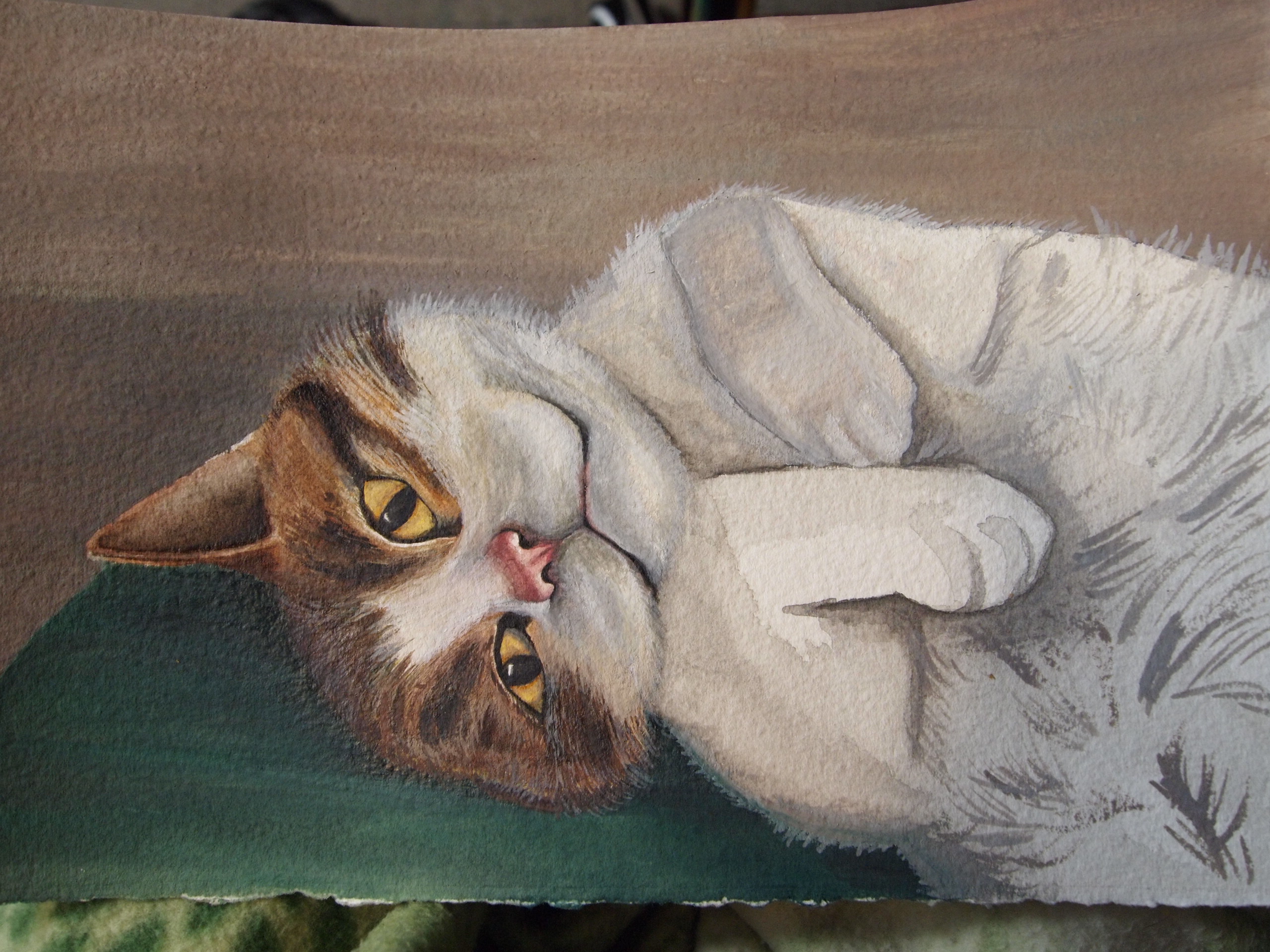
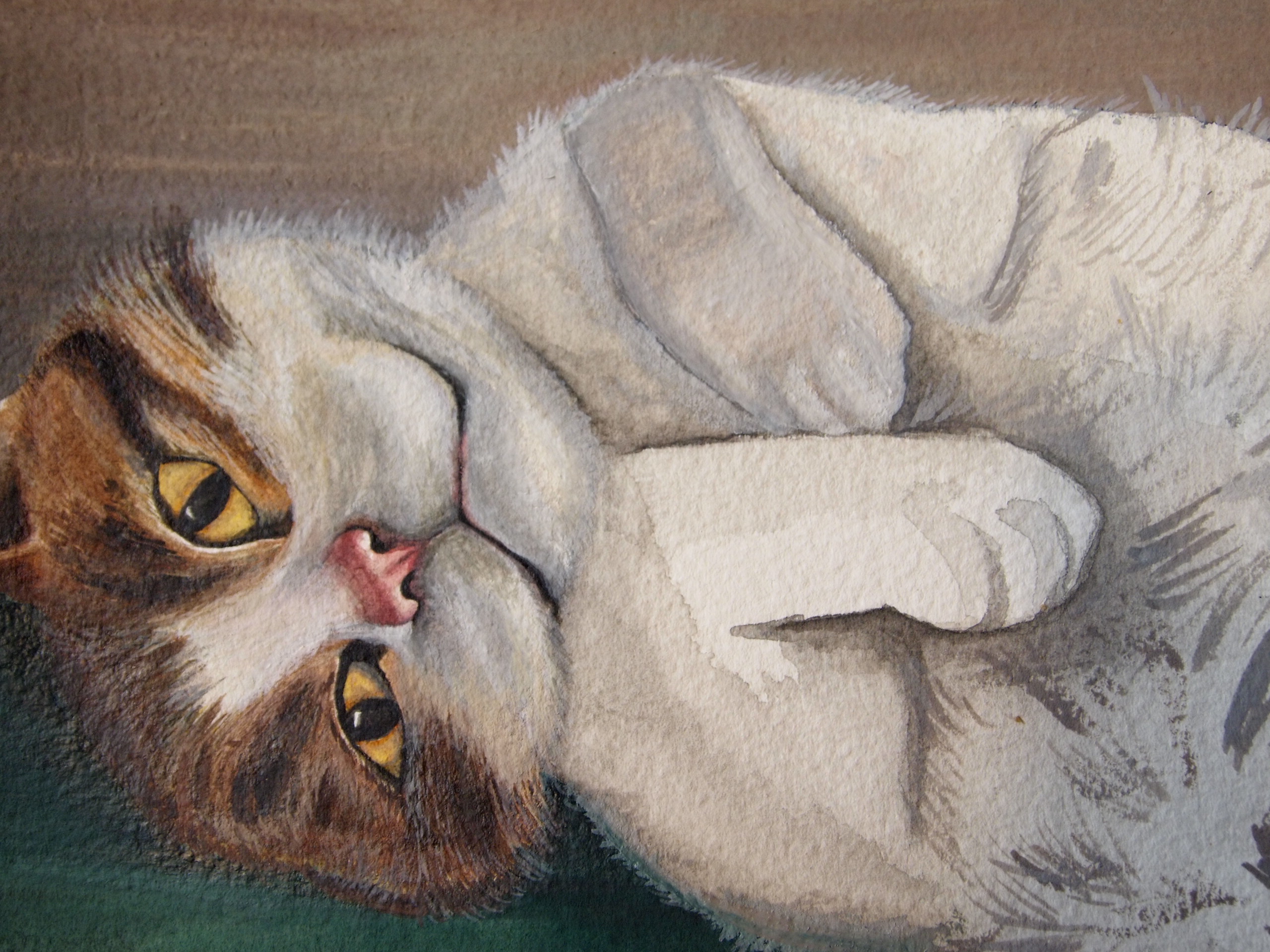
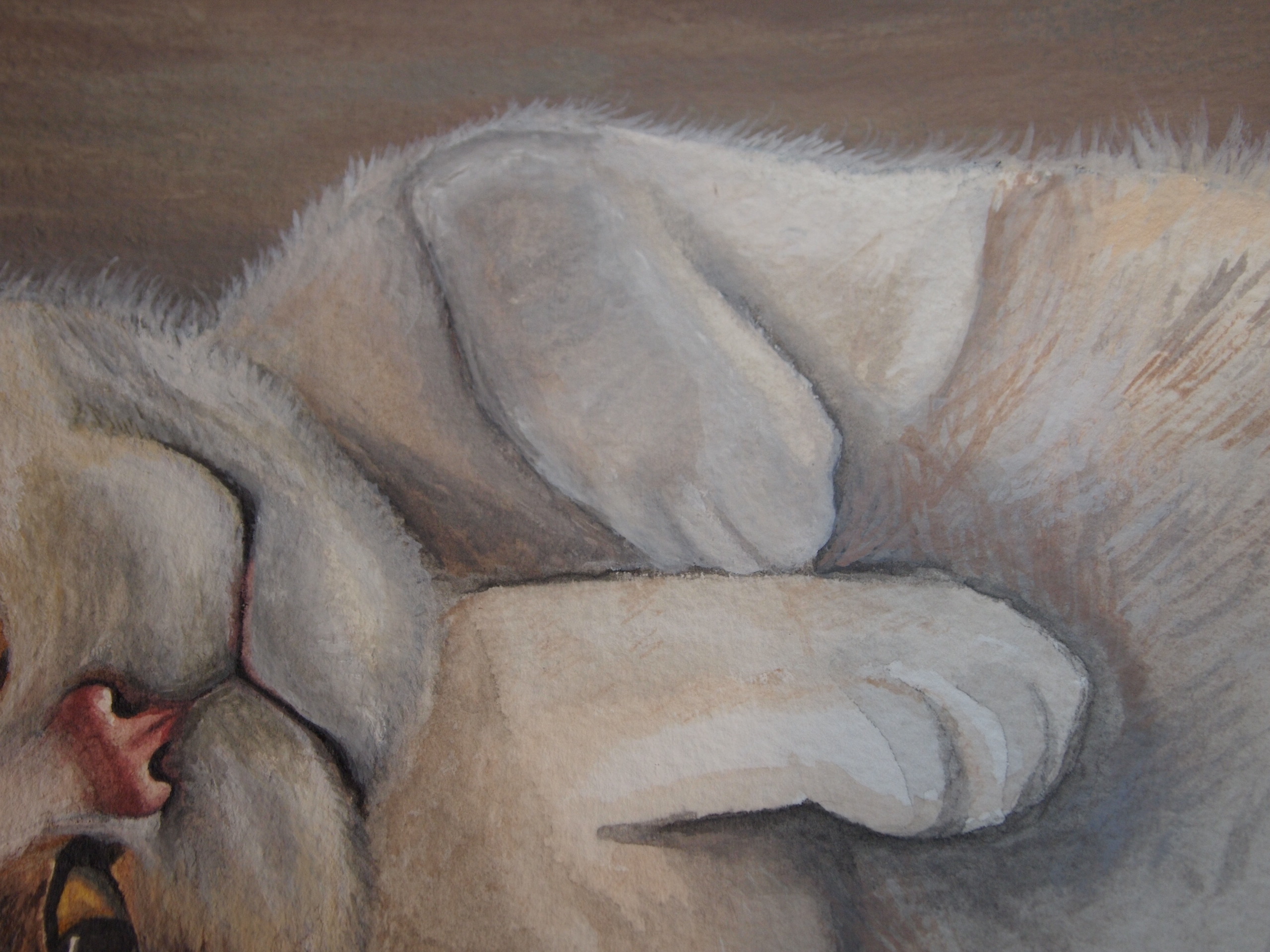
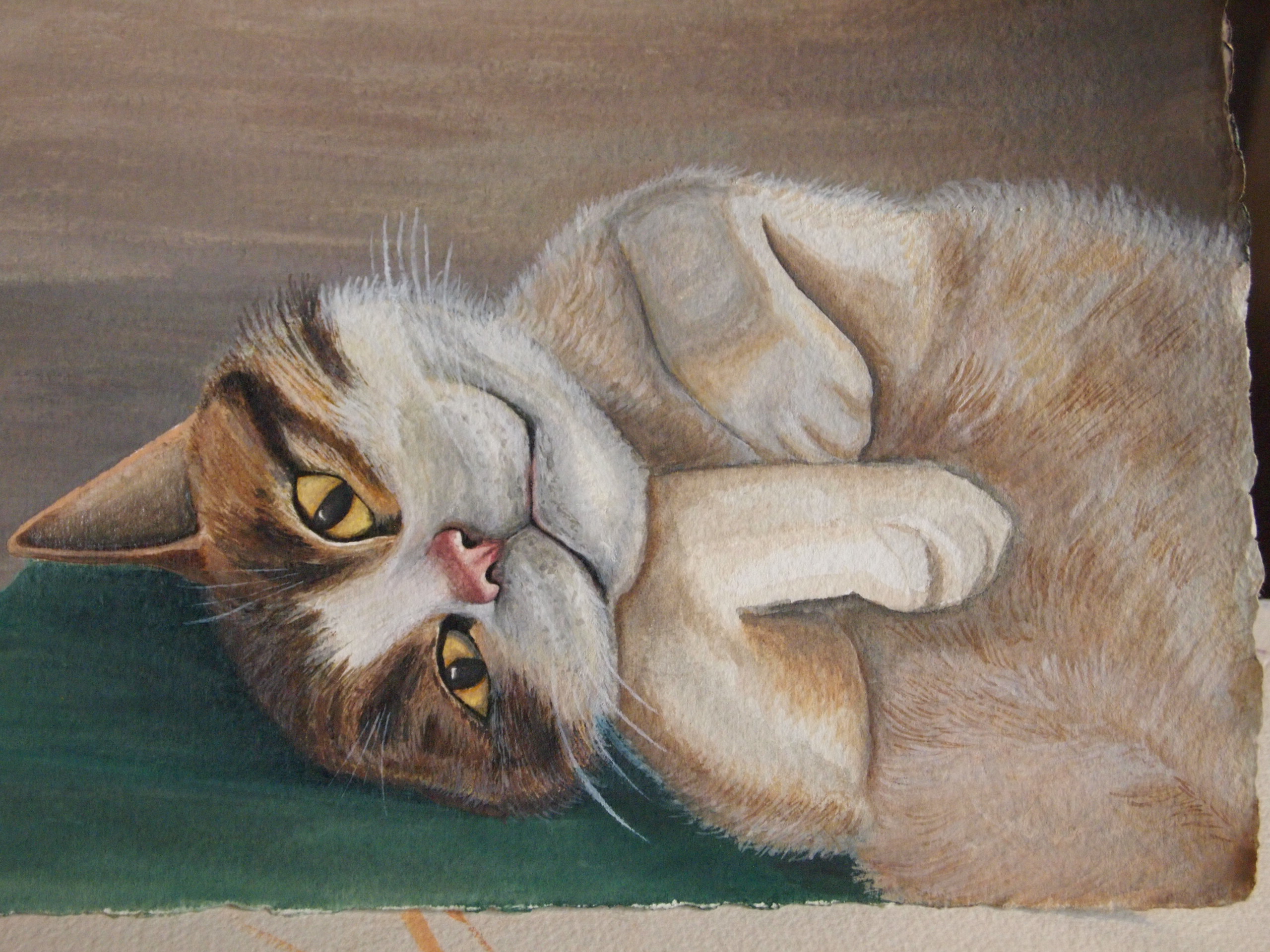
When I painted the body fur I first looked at the photo to see areas where the fur was darkest. Technically, you could save a lot of time if you just leave that part alone and leave more of a watercolor look to the painting. I actually really liked how it looked before I painted the body fur on - but once started, I couldn't go back!
So, I first painted in darker patches of belly fur on the kitty. Then, I went back in and added some water to soften it out (I made it took dark at first). I then tried to pay attention again to the photo and area of hair growth and movement and just painted long brush strokes for the fur.
I had some problems really showing the white fur on the belly - this is why gouache would have been very useful and would have really stood out better.
So, I first painted in darker patches of belly fur on the kitty. Then, I went back in and added some water to soften it out (I made it took dark at first). I then tried to pay attention again to the photo and area of hair growth and movement and just painted long brush strokes for the fur.
I had some problems really showing the white fur on the belly - this is why gouache would have been very useful and would have really stood out better.
Final Details & Tips
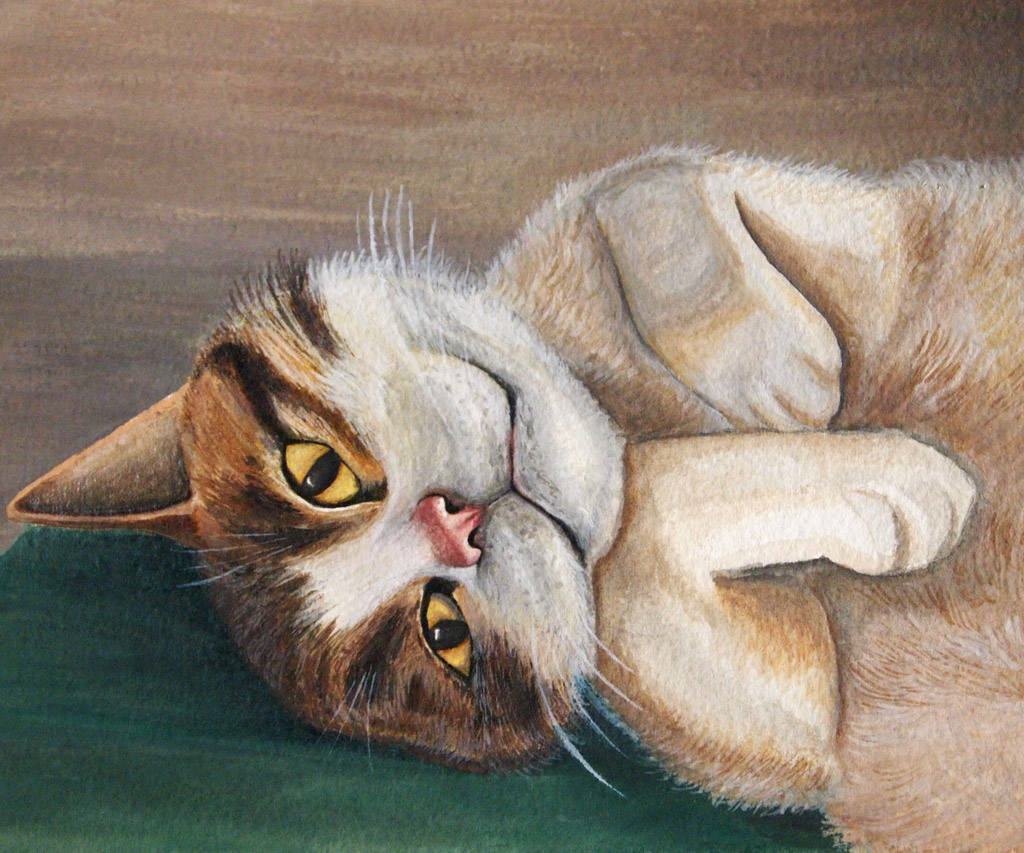
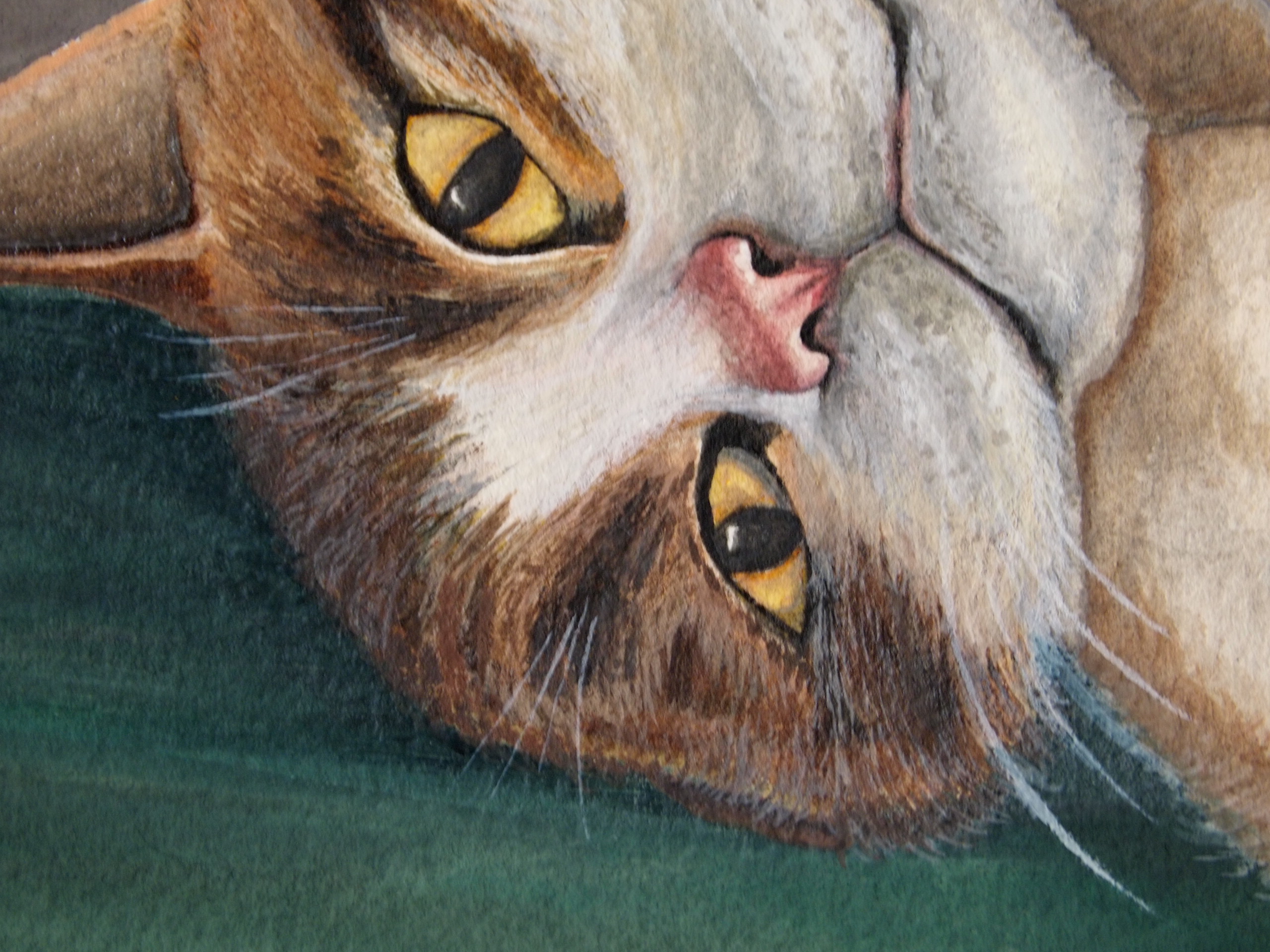
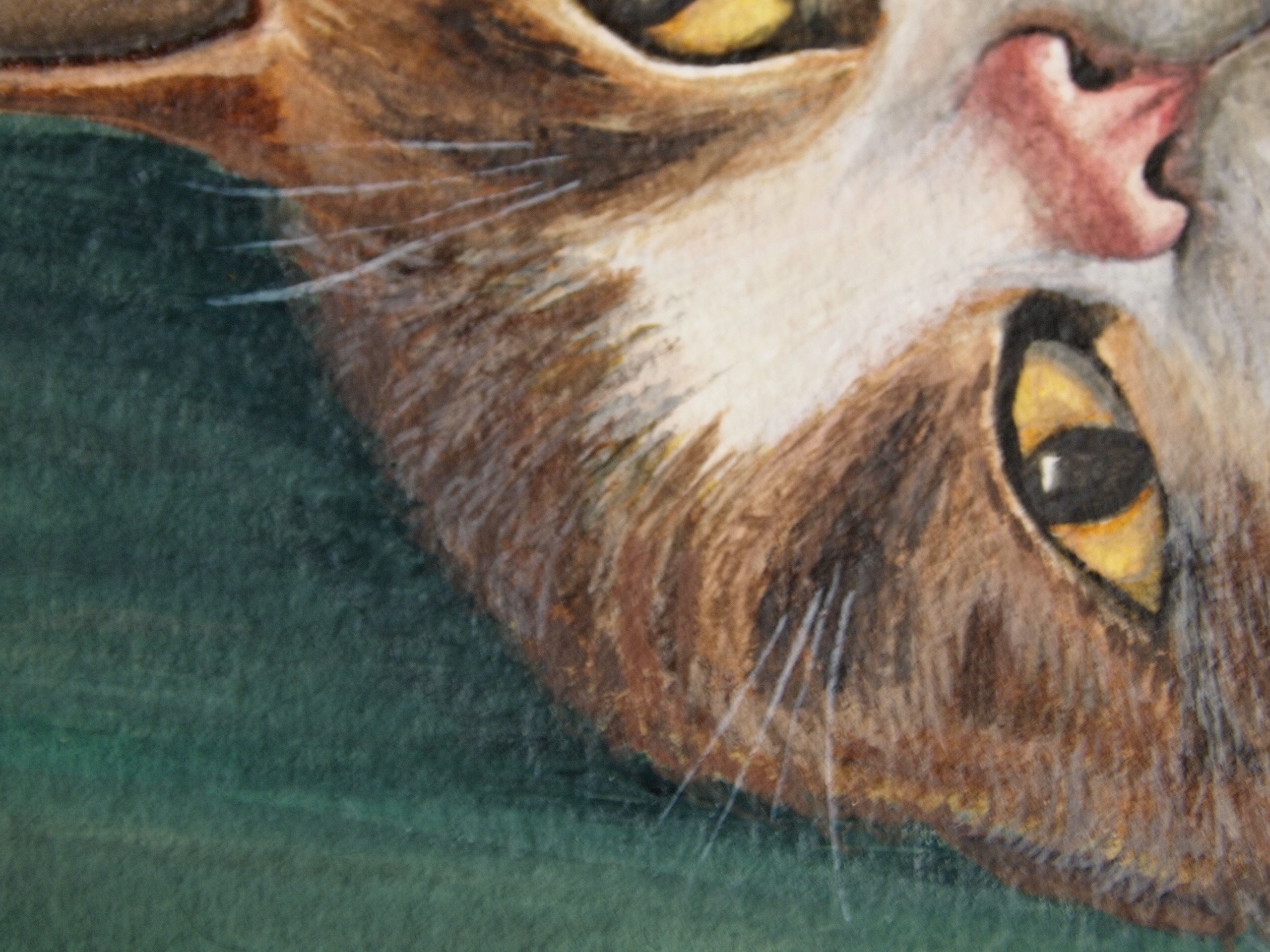
Look at your painting and where you are at with it. Look at your photo to constantly compare the details. When you look at the photo, be sure to find the darkest areas on it. Make sure you emphasize those dark areas by painting them darker than the rest. The eyes will really pop out if you add that contrast to them - and create the darker lines where needed.
Finally, the whiskers can be tricky because you want to get them right the first time. Practice practice practice before you paint them! You'll want a good fine-detail brush for this! Be sure to have enough paint and water to allow the paint to flow easily and create long brush strokes.
Lastly, be sure to add shadows wherever you see them in the photo. For example, underneath the cat's head in my portrait you will see that the green is darker in certain areas - and this is to show the shadow from his head. It makes a big difference and helps make your portrait look real.
Go back over areas and add fur to the edges - be sure to avoid any straight edges (other than ears) - where fur belongs. Paint whatever you see.
I hope this Instructable helps you paint an awesome pet portrait!
Finally, the whiskers can be tricky because you want to get them right the first time. Practice practice practice before you paint them! You'll want a good fine-detail brush for this! Be sure to have enough paint and water to allow the paint to flow easily and create long brush strokes.
Lastly, be sure to add shadows wherever you see them in the photo. For example, underneath the cat's head in my portrait you will see that the green is darker in certain areas - and this is to show the shadow from his head. It makes a big difference and helps make your portrait look real.
Go back over areas and add fur to the edges - be sure to avoid any straight edges (other than ears) - where fur belongs. Paint whatever you see.
I hope this Instructable helps you paint an awesome pet portrait!